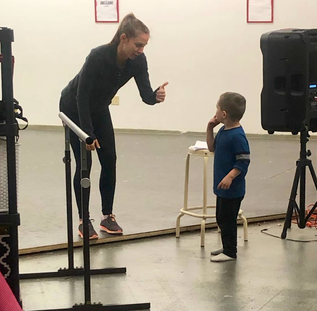 Tradition. Passion. Dedication. Welcome to Scoil Rince Luimni, also known as SRL Irish Dance Academy! We’re a small, independently-owned Irish dance studio located in South Windsor, Connecticut and we’re so happy you’re here. A little about us: SRL was founded in 2014 by Courtney Jay, TCRG after she finished her BA in Irish Music and Dance at the University of Limerick. (In fact, that’s why we’re SRL—in Irish Gaelic Scoil (scull) is school, Rince (ring-ka) is dance, and Luimni (lim-nee) is Limerick!) Miss Courtney, as the dancers call her, has been an Irish dancer her whole life and has been teaching and mentoring younger dancers since she was 13. During her time in Limerick, Courtney trained at the Fleming-Ball School of Irish Dance, where she danced her way to 2 solo world medals, regional titles in solo and team championships, and top 10 at every international major competition. Before leaving Ireland, Courtney was certified by the CLRG (the largest and oldest governing body of Irish dance in the world) and then came home to Connecticut to create SRL! 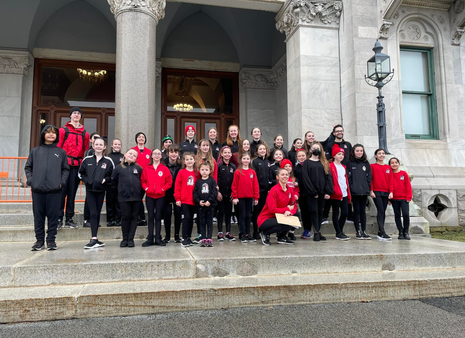 8 years later and SRL is a tight-knit community that instructs in the storied tradition of Irish dance for those as young as 2-years-old (check out Tiny Jig to learn more!) into adulthood (check out SRL After Dark to learn more!) We take this highly athletic and artistic sport and apply our modern, paced approach to training that helps our dancers find their own, personal goals—whether that be recreation, casual performances, or the competitive track. In this supportive environment, we focus on the whole dancer: technique and whole-body conditioning to be sure, but also the promotion of healthy life skills (such as setting and achieving goals, teamwork, focus, and dedication.) In line with that, SRL offers mentoring opportunities at every turn—from class helpers to buddies at dancers’ first competitions and performances—and cultivates a spirit of support and community that’s really what Irish dance is all about! Our small, but passionate staff is ready to help guide and encourage your dancer—whether they be just starting out or qualifying for Worlds—through structured lessons that optimize their opportunities to grow both as dancers and as people. While Irish dance has a long tradition (read more about its origins here!) and strong ties to Ireland’s national identity, you don’t need to be Irish to do Irish dance. As the Irish diaspora has spread across the world, Irish dance has become more than a traditional art form (though it retains those roots and music)—it’s a global community. All you need to join in is passion, dedication, and someone to teach you—and we’d love to help out! 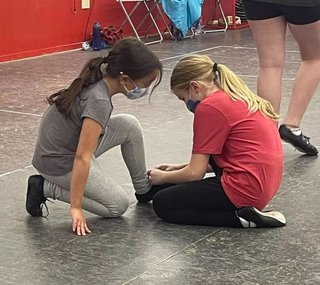 SRL is registered with the CLRG, the Irish Dance Teachers of North America, and the New England Irish Dance Teachers. Classes run on a school year schedule from September to June--sign up now for a trial class to lock in your preferred class time, or take a look at our 4-week taster sessions to really get a feel for it before signing up for the year! Please feel free to reach out to our Office Manager at [email protected] with any questions. They’re happy to help! This post is part of a series. Take a look at our last 411 post, all dancer testimonials, here. Also: check out the blog every Monday and Thursday for more posts about Irish history, dance culture, community news, and spotlights on our dancers, staff, and families—among other fun projects! And don’t forget to dance along with us on both Facebook and Instagram.
0 Comments
 Part 2 Interested in trying out Irish dance, but aren’t entirely sure? We could talk all day long about the benefits Irish dance has, physically, mentally, and socially (and we have—check out past 411 posts to learn more!) but why don’t we let some of our dancers tell you a little more about why they love Irish dance here at SRL! We hope you’ll join us! Looking for: far-reaching life skills? “Irish Dance trained me to have a very high stamina, physically and mentally. Courtney was the best at pushing her dancers towards their goals. I know how to work towards long term goal without being worn out, and to push through to the very end.”—Lindsey Looking for: competitive spirit? “My favorite thing about dance is the competition. I like that in Irish dance you can show off how much you've learned and progressed.”—Magnus 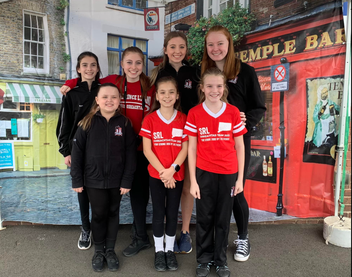 Looking for: enjoyment and self-expression? “When there are no words to explain how you feel, you express yourself through dance. I remember there would be nights when…I was tired, but when I walked through those studio doors I knew it was my time to work. And when I walked out of those doors at the end of the night, I felt like a better person.”—Lindsey Looking for: inspiration? “I look up to Courtney because she has given me a second home and something that I truly love.”—Ellie Looking for: friends? “Dance has given me the ability to have friends all around the world that share the same love and passion for Irish dance that I do.”—Christian 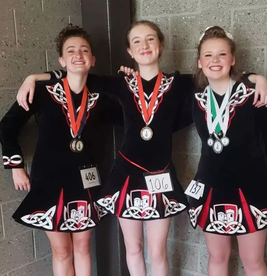 Looking for: somewhere to learn and grow? “Irish dance was a life changing experience that provided me with so many opportunities to learn and grow. It was a daily challenge, which inspires my work ethic today. I always aim high and dream big. Through Irish Dance, I learned by working hard and practicing my craft, I could achieve anything.”—Tara Looking for: something to be passionate about? Just take Tilly’s word for it: “I like Irish dance and you will too!” If your dancer is looking for it, SRL has it! While classes run on a school year schedule from September to June, we have a special offer to let new dancers get a taste before they sign up in the fall! SRL’s Intro to Irish Dance Summer Camp sign-ups are now open for new dancers 2-12, at work-friendly drop off times for parents. Learn more about the program here, or feel free to reach out to our Office Manager at [email protected]. They’re happy to help! This post is part of a series. Take a look at our last 411 post—tons of testimonials from parents!— here. Also: check out the blog every Monday and Thursday for more posts about Irish history, dance culture, community news, and spotlights on our dancers, staff, and families—among other fun projects! And don’t forget to dance along with us on both Facebook and Instagram. 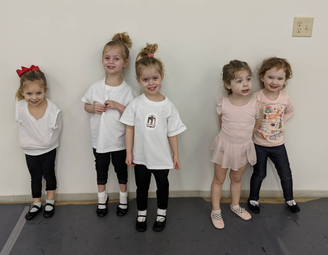 If you can walk, you can dance! Think your preschooler is too young to start dance? Think again! SRL Irish Dance Academy is proud to offer the Jump’n Jig program for our littlest dancers, aged 2 to 5! Split into two age groups (2-3 Tiny Jig and 4-5 Pre-Beginner,) this program was designed by early-childhood expert and ADCRG, Fiona Holmes. Classes start with helping our newest dancers learn how to act and engage within a dance class and move on to developing motor skills and musicality (all while making sure there’s plenty of fun in the meantime!) And with each class starting with a friendly welcome where they can bring along their favorite stuffed friend from home, SRL’s adoption of the Jump’n Jig program has helped get even the most reticent new dancer into the studio! 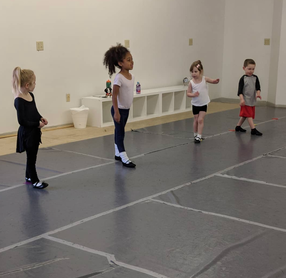 There’s plenty of benefits to starting your child in Irish dance (and starting them early!) and both our Tiny Jig and Pre-Beginner classes cover all the bases: safe social interactions with peers, instructors, and student mentors, working on not just foundational dance skills, but listening skills, and a way to grow a sense of personhood and independence. Beyond that are the physical benefits! We utilize two movement stations—circle time for direct interaction and a “track” across the room to practice skills solo—to work on single leg balancing (adding accessory movements gradually,) leg and foot strength, foot placement for Irish dance, moving on or around markers and targets, and concepts like right/left and front/back. These skills form a strong base for all forms of movement (think about football players taking ballet!) and many Tiny Jiggers move on through the levels and become life-long Irish dancers! Irish dance has a long and rich tradition and history behind it, but you don’t need to have Irish heritage to be an Irish dancer. While the steps and the music are part of Ireland’s cultural heritage, Irish dance has become a global community—and SRL is a tight-knit and supportive community within that larger sphere. In this encouraging environment, dancers are exposed to a culture beyond their own while they develop a strong sense of musicality and rhythm—learning to actively listen to the music, find the beat by clapping, and utilizing props so they can dance with the music instead of to the music (the hardest thing to teach a dancer!) 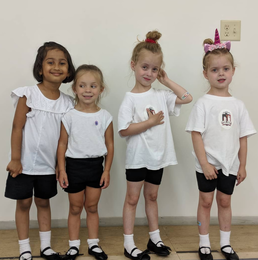 A successful SRL dancer isn’t just strong on technique—we see success as a confident, happy, and comfortable dancer! While classes run on a school year schedule from September to June, we have a special offer to let new dancers get a taste before they sign up in the fall! SRL’s Intro to Irish Dance Summer Camp sign-ups are now open for new dancers 2-12, with two sessions available at work-friendly drop off times for parents. Learn more about the program here, or feel free to reach out to our Office Manager at [email protected]. They’re happy to help! This post is part of a series. Take a look at our last 411 post, about the benefits of Irish dance, here. Also: check out the blog every Monday and Thursday for more posts about Irish history, dance culture, community news, and spotlights on our dancers, staff, and families—among other fun projects! And don’t forget to dance along with us on both Facebook and Instagram. 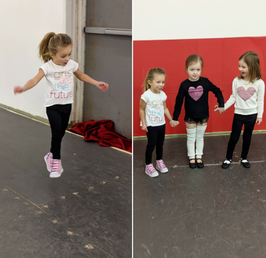 The question Irish dancers get asked the most is: why Irish dance? There’s a lot of amazing things to love about this artistic sport—its long and storied history, cultural enrichment, and beautiful costumes, to name a few—but the benefits of this particular type of dance can be wide-reaching, both physically and mentally, and even life-long! Let’s explore a few: Motor Skills & Mind-Body Connection: At the youngest age range—we offer classes starting a 2-years-old!--we concentrate on motor skills and correcting any left/right imbalances early in their development. Starting dance at any age is beneficial, but check out our post about the benefits of starting your dancer early here. Flexibility, Balance, Coordination, and Strength: While many dance studios in the past concentrated more on the steps than the conditioning, SRL has always been committed to providing balanced training that looks at what the whole dancer needs, not just their feet! All age groups are doing more than learning to dance, they’re stretching and completing exercises in class that strengthen the whole dancer. 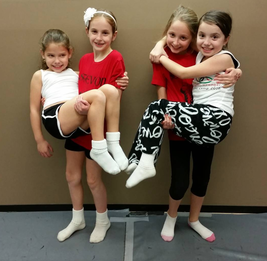 Independence: Whether your dancer is 12 or 2, they’ve been spending A LOT of time with you over the last two years. Going into dance class by themselves can be the first step toward forming their own personhood in this time when kids have been isolated at home more than ever. It’s also a fun, safe space for your dancer to make new friends without parental influence! Musicality: Irish dance is unique in many ways, but its connection to music is particularly strong! (Learn more about music in Irish dance here.) Dancers not only develop their sense of rhythm and a deeper understanding of music, but also cultivate an appreciation for traditional Irish music, often choosing to supplement their dancing by learning to play an instrument. Social Skills and Teamwork: Not all of Irish dance is a solo performance! Dance class is a great time for your dancer to practice appropriate social skills, as well as make new friends. Later goals can include céilí dancing and teams, where dancers learn to dance in unison and work together. 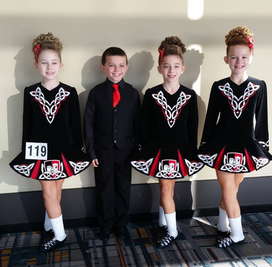 Goal Setting and Self-Determination: Whether the goal be big (going to Nationals!) or smaller (getting to perform in a fancier dress,) SRL is all about small, every day steps leading to larger goals. We help each dancer set personal goals in their dance career, and this example has proven to carry through in many dancers’ school performance and at home behavior. Irish dance is more about building up skills over time, and is less about instant gratification and more about hard work and dedication—skills that will serve them all their lives! Community: SRL is a community-focused studio where we’re all about supporting each other, even when we’re competing! But Irish dance is more than our studio, it’s a tight-knit, but also global community. All you need to enter that community is a love of Irish dance, and then you’re welcome! Interested in seeing all that Irish dance has to offer? Check out SRL’s Intro to Irish Dance Summer Camp for your dancer! This is a low-commitment way for students 2-12 (and their parents) to gage interest before signing up for classes. Check out the details (and the deals your session will include!) here. We hope to meet you soon! Have any questions? Feel free to email our Office Manager at [email protected]. They’re happy to help! This post is part of a series. Take a look at our last 411 post, a longer explanation of our Intro to Irish Dance Summer Camp program, here. Also: check out the blog every Monday and Thursday for more posts about Irish history, dance culture, community news, and spotlights on our dancers, staff, and families—among other fun projects! And don’t forget to dance along with us on both Facebook and Instagram. 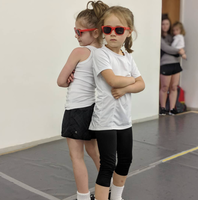 Does your child love to jump, wiggle, and move? Have they been bouncing off the walls all year? Are they obsessed with watching dance videos on YouTube when they get their coveted screen time? (Us, too!) Maybe it’s time to find a new outlet for all that excess energy…and why not try Irish dance? With Scoil Rince Luimni’s Intro to Irish Dance Summer Camp program, dancers from ages 2 to 12 will spend a week of classes letting that built up energy out, learning a new skill, and having safe, positive social interactions with new friends! This program is designed to really let your child try out this extremely active and fast-paced artistic sport in a secure and fun environment, but also to let you, as a parent, see if this is the right fit for your family. During one of our two Intro Summer Camp sessions, your dancer will take one class each evening (at a work-friendly time for parents,) for a full week to help them gage their interest (and get in some social time and physical exercise!) 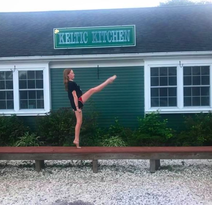 As Irish dance has innumerable benefits (like increased coordination, flexibility, balance, and strength…along with musicality and life skills such as goal setting, teamwork, and self-determination,) we’ve added extra value to the Intro to Irish Dance Summer Camp program, as well! While you’ll be able to meet our staff, explore the studio, and get a feel for what Irish dance is all about, your purchase of a session also gifts you the first four weeks of classes come September for free! For our littlest dancers in our Tiny Jig or Pre-Beginner programs (2-5) this comes to only $125, and for our Beginners (6-12) only $155. Sign up and see the full details here: Session 1: July 18-22 or Session 2: August 15-19 Ages 2-3, 5:00-5:25PM Ages 4-5, 5:30-6:00PM Ages 6-12, 6:00-6:45PM Have any questions? Feel free to shoot our Office Manager an email at [email protected]. They're happy to help!
We look forward to meeting you soon! This post is part of a series. Take a look at our last 411 post, all about the general benefits of summer camps, here. Also: check out the blog every Monday and Thursday for more posts about Irish history, dance culture, community news, and spotlights on our dancers, staff, and families—among other fun projects! And don’t forget to dance along with us on both Facebook and Instagram. 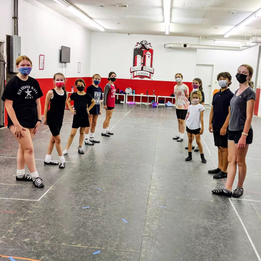 Summer is here! That means long months of no school--which can be a benefit or a problem, depending on which side of the parent/child divide you're on. But since the 1870s, parents have been turning to the most active possible solution to keep their kids engaged during the hottest months…summer camp! Connecticut has a long history with summer camps, with the first American summer camp having been founded in Gunnery, CT just after the Civil War. The idea caught fire and in a less than 20-year period around the turn of the century the number of summer camps in the United States rose from 100 to over 1,000. These first camps were all about removing children from urban environments to reconnect with nature, and this kind of summer camp hasn’t changed all that much since. But after WWII, parents were eager to return their children to a more innocent time and summer camps had a second boom—this time with a wider range of variety as special-interest camps such as sports camps and arts camps popped up all over the country. 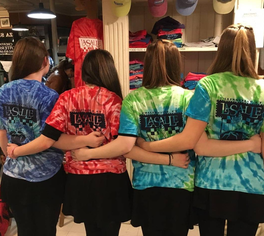 But what has made the summer camp an American institution? The skills taught at summer camps—be it outdoorsmanship or art forms like dance—have always been only part of the equation. The Harvard Graduate School of Education puts it this way: “All those classic camp dynamics—being away from home and parents, making new friends, being part of a team, and trying new things—are building blocks to crucial social-emotional [learning (or SEL)] skills.” Foundational, SEL skills include “self-awareness, self-management, social awareness, relationship skills, and responsible decision making” and have been found to be crucial for both success in school and in later, professional life. But, unfortunately, due to the restraints placed on teachers by state-mandated curriculums, we often see this type of learning not prioritized in the classroom. Americans have been turning to a solution outside of school for 150 years now, and we have the data to back it up: a 2005 study conducted by the American Camp Association found consistent and significant growth in SEL skills (and self-confidence) in children after only a single summer camp session! As important as SEL skills are, there’s another factor that’s helped give summer camps such staying power: the physical benefits. The majority of summer camps have always included a focus on physical activity, and in our increasingly digitized world, finding a healthy and active outlet for kids is more important than ever. We all know that our country has been facing issues for years when it comes to the health of younger generations—but it turns out summer camp could be of help. In a 2011 edition of the Journal of Adolescence, a study reported that adolescents with no organized summer activities were at the greatest risk of obesity, while a 2010 study found that day camp campers who were exposed to active peers and active teachers were more likely to be physically active even after camp ended. While a week of physical activity is definitely good, the way camps instill the habit of exercise is even better! 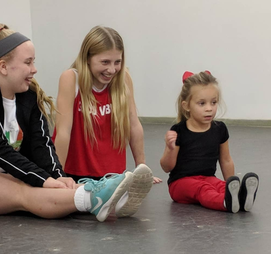 While our registered dancers here at SRL Irish Dance Academy (from Pre-Beginner level up!) know all about how fun one of our summer camps can be, what about someone who’s never attended an Irish dance class? Don’t worry, we have a great option for even the newest dancer, as well! SRL is hosting two, week-long “Intro to Irish Dance” Summer Camps this year. Each week consists of five straight days of one class a day (at work-friendly times for parents!) to give new dancers a real feel for our year-long programs. Click the link above to learn more about our two upcoming sessions from July 18th-22nd and August 15th-19th. We hope to see you there! This camp is multipurpose, for not only will it ease a parent’s mind about how interested their child is in Irish dance before enrolling for the year, but it will provide that social and physical outlet kids need every summer (but this one especially!) Even if your child finds out Irish dance isn’t right for them, they’ll still be invited into a fun, welcoming environment, taught to stretch and move their body in new ways, and be able to interact with their peers as both team mates and friends while they increase their self-esteem by learning a new skill. We’ve been holding classes in our clean, appropriately socially-distanced studio since September without any issue, and are excited to introduce your child to the world of Irish dance! 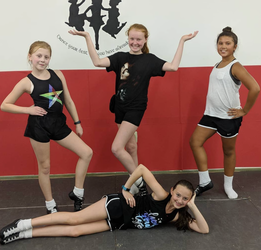 We could go on and on about the benefits of starting dance early (and we already have! check out our post about it,) but the real takeaway from SRL’s intro program is the same as any camp: increasing your child’s SEL skills while allowing them to express themselves in a healthy way and have fun! This opportunity creates a break from technology, lets them develop a sense of independence, let all that silly energy out, and have more and varied social interactions. And, not to mention, it gives parents a much-needed break, too! Learn more about our “Intro to Irish Dance" Summer Camp—which comes with a very special package deal for the Fall! Or feel free to reach out by phone or email ([email protected]) for more info. We look forward to dancing with you soon! 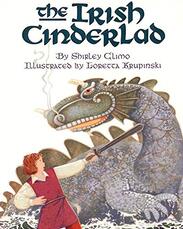 Volume XXVI Children’s Books, Part 4 With summer vacation just now getting underway, there’s a lot of extra time to fill for all our SRL parents! We’re here with some book recommendations for our littlest dancers (aka picture books) to help keep your child’s interest on Ireland and Irish dance over the break while entertaining them. (Maybe it will even inspire some practice!) Enjoy! 1. The Irish Cinderlad, Shirley Climo Illustrated by Loretta Krupinski This one is an incredible mash-up, with a twist to boot: not only is it a reimagining of Cinderella mixed with Irish folklore—it’s a gender-swap with a male protagonist! Becan’s always been worried about his big feet, but his worries multiple when his father remarries and his stepmother and her three daughters treat Becan cruelly. Becan runs away to escape a life with only bread crusts to eat and toiling in the field, and finds himself on a grand adventure. With a magical bull for a fairy godmother for help, Becan defeats creatures out of Irish lore and rescues a princess—running off and leaving only his remarkably large boot behind. When the princess is searching the kingdom for the owner of the giant boot, Becan wonders: what will be his fate when his feet give him away? This book has overwhelmingly positive reviews on Goodreads and Amazon for its mix of familiar fairytale with Irish myth (and for being one of the rare fairytales that centers on a male!)--get a preview with this video of the book being read out loud! 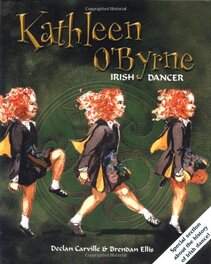 2. Kathleen O’Byrne: Irish Dancer, Declan Carville & Brendan Ellis Books about Irish dance are rare, and we’ve covered a few already in previous posts (check out part 2 or some holiday gift ideas for more,) but if you look hard enough you can find a few hiding out there on the internet! This one tells readers about a young Irish dancer named Kathleen, who practices her jigs, reels, and hornpipes any available moment of the day. Kathleen longs to wear an embroidered dress at a feis like the older dancers, and she’s absolutely crushed when she’s told she isn’t quite ready for that step. However, with the help of some neighborhood friends, she learns how to deal with disappointment and that the most important part of Irish dance isn’t the costumes or competitions, but the joy the art can bring her and others! This very important lesson for any Irish dancer to learn is complimented by beautiful illustrations painted by medical illustrator Ellis and even has a special feature about the history of Irish dance! 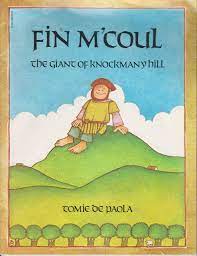 3. Fin M’Coul: The Giant of Knockmany Hill, Tomie dePaola Tomie dePaola’s books are all classics for multiple reasons: his iconic and instantly recognizable illustrations, his ability to translate the mythology of a multitude of cultures for little readers, and his ability to fill any lore with charm, kindness, and grace. This ALA Notable Book is no different as dePaola tackles one of the most iconic stories in Irish mythology: Fin M’Coul and the creation of the Giant’s Causeway. When Fin M’Coul is spending his days in peace on Knockmany Hill when he’s challenged by the Scottish giants across the sea. M’Coul spends his days building a causeway to go confront the Scottish when he learns that a much bigger and stronger giant, Cucullin is the one waiting to fight him. Terrified, M’Coul tells his wife Oonagh of his fears, and she comes up with a clever plan full of magic and cunning to save her husband. Along with the detailed borders based on ancient Irish metalwork, you can’t get more Irish than this! (And don’t miss dePaola’s other Irish books: Jamie O’Rourke and the Big Potato and Patrick: Patron Saint of Ireland.) 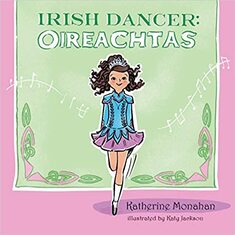 4. Irish Dancer: Oireachtas, Katherine Monahan Illustrated by Katy Jackson That’s right, we managed to find not one, but two books about Irish dance! For our Irish dance parents a little newer to the world, let us explain the second part of the title: Oireachtas (pronounced, roughly, ee-ruck-tuhz) is a larger dance competition for dancers competing at a higher level (a step above a feis, let’s say—you have to qualify to compete!) Monahan is a veteran Irish dancer who started dancing at 9 and ended her career by attending the Oireachtas World Championship in Ireland, so you know she knows her stuff! Accompanied by Jackson’s lively illustrations that help capture the unique movements of Irish dance out in the wider world, this story follows an Irish dancer as she practices and prepares for a big competition. But it’s not just about competing! It’s about determination in reaching your goals, as well as the happiness, confidence, and the strength that comes from the incredible artistic sport of Irish dance—a must read for our future World Champs! Listen to Monahan talk about her book on The Irish Dance podcast here. 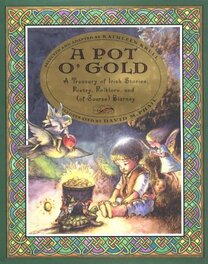 5. A Pot O’ Gold: A Treasury of Irish Stories, Poetry, Folklore, and (of course) Blarney, Kathleen Krull Illustrated by David M. Phail With a classic illustration style that will remind parents of the nursery rhyme treasuries of their childhood, Krull’s collection tackles the huge historical, mythological, and literary lore of the Emerald Isle. Combining everything from beloved recipes and stories to timeless poems by Yeats and Joyce and traditional songs (never forgetting those bits of blarney all the way through,) this collection is meant for families to enjoy throughout the years together. These tales and this rich history has engaged imaginations throughout the world for thousands of years—and these legends of everything from leprechauns and faeries to the real life culture of Ireland helps continue the tradition. A truly unique volume for both its expansiveness (over 50 individual entries!) and its effectiveness, this is one that every generation can enjoy together. Happy reading! This post is part of a series. Read our last modern Ireland post, all about Irish slang, here. Check out the blog every Monday and Thursday for more posts about Irish history, dance culture, community news, and spotlights on our dancers, staff, and families—among other fun projects! And don’t forget to dance along with us on both Facebook and Instagram. 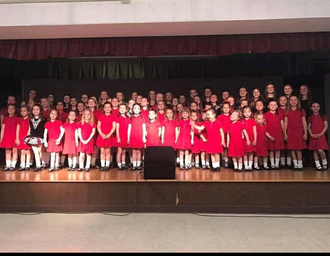 Read our original post on this subject here! At SRL Irish Dance Academy, our annual Showcase (aka our end of the year recital) is just around the corner! We have more first time Showcase participants than ever this year—both because of our bounty of new students, and the pandemic having paused the tradition for two years. We’re here to provide some tips that will hopefully help our dancers (and, by extension, their parents,) have a stress-free and fun time during this performance that’s more celebration than anything else! First off, we make sure to frame the recital in a casual way, and recommend you do so at home, too! We don’t stress this being a big, cumulative performance, but rather talk about it as a fun, low-key way for our dancers to share the skills they’ve learned this year (and the joy of dance) with friends and family. The audience isn’t the focus of the conversation—the dancer is! When they practice in class, we emphasize the importance of doing our best and showing our best skills, looking straight ahead and focusing on technique—not who’s watching them. 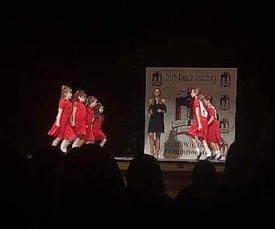 However, the audience is there and the dancers, no matter how little, will realize it eventually. Just make sure they remember—this isn’t any audience, it’s a friendly audience! It’s an auditorium full of moms and dads, sisters and brothers, aunts and uncles, and grandparents and friends that are there to do one thing: cheer each and every dancer on. Mistakes will happen, but no one in the audience will mind—they’re there to support and know that everyone on that stage is learning! Your dancer’s expectation of their self is likely higher than yours, just make sure they know that! And if they’re still feeling nervous? Practice makes perfect isn’t just a saying! There’s lots of way in this last week or so before the performance to help soothe their nerves. First off, try to make sure there’s no mirrors around while they’re practicing, so they can get used to an environment without them. However, feel free to record them performing for them to watch back—self-critique is an important skill to practice, and this is a fantastic opportunity. Lastly, try to work up a “mock audience”—this may be just your family, all their stuffed animals, or some friends from the neighborhood—the key is to help them treat the practice like the performance so it will feel normal day of. 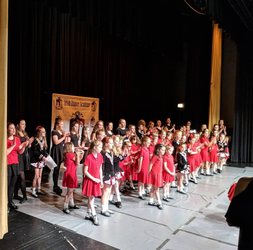 But our biggest tip? Don’t stress it! When you talk with your dancer about performing the emphasis should always be on the fun of performing. It’s a good idea to discuss what happens if and when they mess up—after all, even the most professional dancers still screw up on stage—and it comes down to three words: just keep dancing! This Showcase is supposed to be a fun time for them—if they fell down while playing tag, they’d get right back up and keep on running! Framing the performance as just another fun thing they’re doing with their dance friends is the best way for nervous dancers to keep going if they get scared. Don’t stress it goes for parents as well. Your dancer might freeze on stage, or decide to freestyle, or do everything backward. And that’s okay! It doesn’t mean they’re not learning in class, or not cut out for dance, or not cut out for performing—and we can guarantee there’s no mess up that will scar them for life. It’s important for both of you to remember this is the beginning of the road, emphasizing the achievement of going out on stage no matter what happens, and helping build their confidence on that bedrock. We have parents every year that swear their dancer is too shy or not ready—only to have that dancer go out on stage, and come back more independent, confidence, and proud of themselves then they were that morning. Just like Irish dance, performing is a skill that takes time to build, and this is just the beginning! 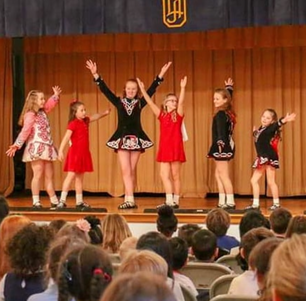 For our new and younger dancers, Showcase has a second opportunity in store for them: there’s no way they won’t leave inspired by the performances of the older and more experienced dancers. Many of our younger dancers will have never seen Irish dance performed at a higher level live, and can be a real moment of motivation for them—to see something like an “end” goal. Highly talkative dancers will likely leave and chat on and on about the hard shoe or Championship numbers, while our quieter dancers might show their passion for Irish dance in subtle ways—practicing more while no one’s watching, or writing or drawing about the Showcase. In any case, it’s the kind of excitement we’re looking to foster! Remember: the doors open at 2:45 pm for gold ticket holders and 3:00 pm for the rest of the audience. (Need to buy your tickets and can’t find the link? Email [email protected] ASAP!) There will be opportunities before the show to enter our raffle for some fantastic prizes, the proceeds of which will go to SRL’s fundraising efforts towards new costumes, competition stipends, scholarships, and equipment. We can’t wait to see you there! This post is part of a series. Read our last 411 post, our recital rundown, here. Check out the blog every Monday and Thursday for more posts about Irish history, dance culture, community news, and spotlights on our dancers, staff, and families—among other fun projects! And don’t forget to dance along with us on both Facebook and Instagram. 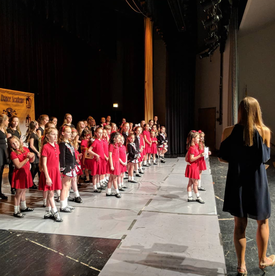 With SRL’s annual Showcase recital just around the corner (we hope you’ve marked your calendar: Saturday, June 18th!) we’re on the blog tonight with a rundown of all you need to know! After the past two years getting paused for the obvious reasons, we know many of our parents and dancers have never participated in an annual Showcase, so we’ve gathered all the info here for you to refer back to. First up: beforehand prep! While all dancers should have their costumes all set at this point, we recommend double-checking them now so nothing’s missing day of (no one wants to go looking for a second poodle sock in a scramble at 8 am for that afternoon’s performance.) And parents, if you don’t have your ticket yet, it’s time to buy! There are two kinds of tickets available: the Gold tickets, which allow you in to the auditorium at 2:45 pm to get priority seating, or the Standard, where you’ll enter at 3:00 pm for the 3:30 pm show! Remember: tickets are nonrefundable, but they are transferrable. If something comes up, you’re able to pass your ticket along to a family member or friend! Since this is a private event, all parents have received the link to buy tickets in the monthly announcements…but if you’re having any trouble locating it just reach out to [email protected]. 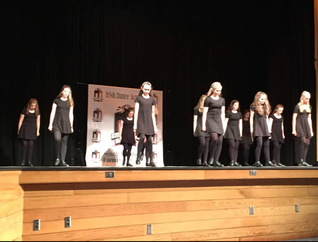 Now, the big stuff: day of! Dancers should be dropped off by their parents at 11:30 am at the East Catholic High School auditorium in Manchester for the all-important dress rehearsal (Tiny Jig dancers will arrive a little later at 1:30 pm.) The reasons for this early arrival are many. Dress rehearsals help newer dancers (and the experienced ones!) get used to the stage after only practicing in the studio, tamp down their nerves, get in some last-minute practice, and let dancers receive any last-minute corrections and tips before the big show! For our staff, it makes sure we can nail down things like lighting and cues, while working out any logistical kinks. Also, since dancers are backstage for the majority of Showcase, it gives them a chance to see the show! In the case of our littlest dancers (Tiny Jig and Pre-Beginner classes only,) one parent is allowed to attend rehearsal with each dancer and stay throughout the day until showtime. As only one parent (and no siblings, friends, etc.) are allowed to join each dancer, we understand that some parents may need to drop off their dancer—don’t worry, each class will have a parent volunteer assigned, so there will be plenty of supervision! While dancers Pre-Beginner and above will head back to backstage once they’ve performed, our Tiny Jig dancers will have a special place to sit to watch the rest of the show. One last bit of info for all ages: make sure your dancer eats before rehearsal and comes with plenty of snacks! It’s a long day, and we need our performers properly fueled! 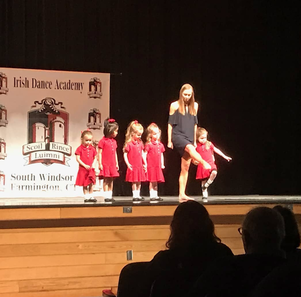 Then, on to the show! The Showcase will begin at 3:30 pm, wrapping up around 5 pm. This is our 8th Annual Showcase and aims to celebrate all our dancers—from 2-years-old to our Championship dancers—doing everything from showing off the new skills they’ve learned this year to displaying the best Irish dance has to offer in fun, exciting numbers! It’s also an opportunity to celebrate our 2022 graduates, scholarship recipients, and do some all-important fundraising for the studio. Make sure to check out all the incredible prizes we’ll be offering in our raffle this year, from Hartford Yard Goats tickets to Bear's Smokehouse gift certificates, and so much more! The final reminder? To have fun! Performing can be stressful, especially for young or new dancers, so our biggest focus is to make sure the fun of performing is emphasized for them so they’ll be excited to return to Irish dance and all its innumerable benefits next year! While performing isn’t necessarily every dancer’s goal, it can be a confidence-boosting and exciting experience that helps dancers mark their progress after a year of hard work. We look forward to seeing you, your dancer, and your enthusiasm there! This post is part of a series. Read our last 411 post, all the parental role in a dancer's development, here. Check out the blog every Monday and Thursday for more posts about Irish history, dance culture, community news, and spotlights on our dancers, staff, and families—among other fun projects! And don’t forget to dance along with us on both Facebook and Instagram. 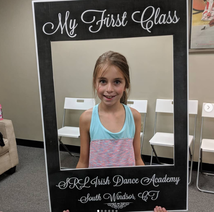 At SRL, our goals aren’t all about dancing, but rather to help your dancer become GREATER—i.e. instill our core values of Growth, Respect, Excellence, Appreciation, Transparency, Enthusiasm, and Resiliency. The world of Irish dance has a wealth of experiences, opportunities, and skills that help impart these ideals to our dancers, and we’re committed to fostering the development of values that will serve your dancer both in and out of the studio. In this new series, we’re looking forward to delving into what these core values really mean to us, and how Irish dance can be so much more than just the steps you learn in class! First up is the capital G: Growth. With our Tiny Jig program, the growth of our dancers can be taken very literally—taking dancers as young as 2 means we get the privilege of watching them grow up—as dancers, and as people. (Not only that, but we have several dancers that have been with us since the start, 8 whole years!) Dance is undeniably good for your dancer’s physical development--it promotes spatial awareness, flexibility, coordination, balance, etc., the list goes on and on—but at SRL, we try to look beyond the physical. It shouldn’t be a surprise that dance is also a boon for your dancer’s emotional growth as well. (After all, psychologists have found that “the better children were able to synchronize their movements with music, the more they smiled.” And as Time recently reported, happy kids are more likely to turn into successful adults.) Not only is there room for pure joy in every dance class, but studies show that dance helps build important social-emotional learning skills, including how to better express their own emotions, emotional regulation, and to understand other’s emotions. 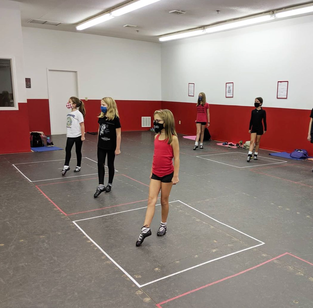 Beyond emotional growth, we also look toward helping our dancers grow as people into creative, focused, hard-working, intelligent, problem-solving, empathetic young adults. The microcosm of the studio, and then the secure world of performance and competition, can be seen as a crucible to hone extremely valuable life skills, rather than just a perfect jig! (Though we do that too!) An example of this growth? For our youngest dancers, this growth comes in small steps: learning to wait your turn, listen to instructions, be kind to your fellow classmates, practice and be prepared for class, and let loose and have fun in an environment outside the home! Then, as our dancers continue to develop and move up through the levels, they’re met with new challenges: goal setting, dealing with the rejection that can come with competition, working as a team, lifting up others rather than comparing yourself to them, how to be both a student and a teacher, and above all: hard work and the knowledge that they’ll only get out of anything what they put into it. Overall, capital-G Growth means more to us at SRL than measuring your success at each feis—it means maturing as a person, as a whole. While we always make sure to balance it with fun (dancing is, above all, incredibly fun, after all!), the way we approach Irish dance isn’t just about improving in one aspect of your life. It’s about how growth in one facet can mean growth in all others. This post is part of a series. Check out the blog every Monday and Thursday for more posts about Irish history, dance culture, community news, and spotlights on our dancers, staff, and families—among other fun projects! And don’t forget to dance along with us on both Facebook and Instagram. 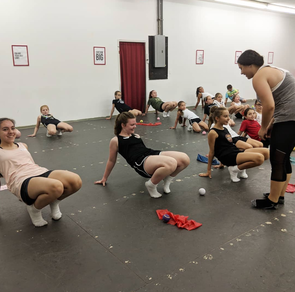 Okay, so, maybe stretching isn’t part of Irish dance’s technique per say, but it is a key component to every dancer’s success. It’s also the most often and easily skipped part of a dancer’s at-home practice—especially younger dancers, as younger muscles are more elastic (as we age, our muscles begin to shrink and lose mass.) However, that doesn’t mean stretching is less important for younger dancers! Stretching remains the primary way dancers can protect their bodies from the fatigue and strain that can build up over a lifetime (or even just their first few years!) of dance, and help prevent both minor and major injuries. But what are the benefits of a regular stretching practice? First off, the key word is regular. Researchers make clear distinctions in their findings--occasional stretching can actually decrease muscle strength if immediately followed with activity, while regular stretching enables muscles to work “most effectively.” But that’s only the tip of the proverbial iceberg. While the obvious benefit is an increase in flexibility (and what dancer doesn’t want that?), it’s also proven to improve performance in all physical activities as it increases joint mobility and, as we’ve mentioned, prevents injury. This is because stretching increases blood flow to your muscles as you temporarily lengthen your muscle fibers. Here’s the number one tip for stretching, one we could shout from the rooftops if we could: stretching is NOT a warmup! Your muscles should be warmed up (some low intensity cardio where you’re not overextending yourself is all it takes) before the stretching starts--stretching cold muscles can potentially cause strain, pulls, or tears. Stretching after dancing is just as important—this is when your muscles are at their warmest. This is a dancer’s best opportunity to really increase flexibility without causing undue strain, as this would be the most pliable your muscles are during a workout.  Other tips? While genetically most dancers have one side they favor and are most flexible on, Irish dance strives for symmetry and your stretching should too! Make sure you’re repeating each side-specific stretch on both sides, while focusing on major muscle groups and your most used joints. This will also help with a dancer’s balance! While your dancer stretches, we’re looking for smooth movements with good posture that are held for 30-60 seconds. No bouncing allowed, as this can cause both injury and muscle tightness—and that smooth motion and hold should under no circumstances be painful. What you want to feel is tension, not pain! And don’t forget: make sure your dancer’s stretching routine is sports-specific. That means making sure the stretches they’re doing aren’t just the generic ones they might learn in P.E. class, but a stretching routine that benefits Irish dancers and the ways they move their bodies specifically. There are innumerable resources specific to Irish dance out there, but, of course, Miss Courtney and our SRL instructors are a wealth of knowledge of what stretch to do for specific issues, and the stretches our dancers learn in class will always be a good idea for at-home practice. Our most loved resources here at SRL include Target Training Dance (here’s an Irish dance-specific stretching YouTube playlist from them!), as well as Irish Dance and Culture Magazine (here’s a great article!) and Ready to Feis (and another!), but always feel free to share what you find in our parent and dancer Facebook group—it’s a community effort! 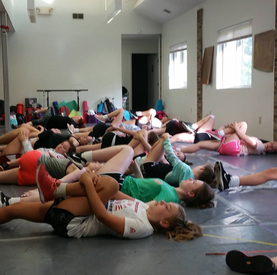 Does your dancer get bored while stretching and tend to rush through it? Remember there’s more than one kind of stretching! While we’ve largely been discussing tips for static (i.e. holding a stretch) stretching in this post, dynamic stretching is recommended by many as one of the best options for before dancing (while static is best utilized after dancing, when the muscles are their warmest. Dynamic stretching is a series of controlled, activity-specific movements performed at a gradually increasing intensity to help prepare your muscles for the activity you’re about to do. Check out Celticore Pilates for a great workout that includes dynamic stretching, for example! The most important thing to remember? Keep it up! Making stretching a regular practice—whatever that practice looks like, as long as it’s done safely and with Irish dance in mind—is the primary factor in whether stretching will be beneficial to your dancer. It’s something that can be done every day, in a variety of places and situations, even if there isn’t time to practice their slip jig. Making it a part of your dancer’s everyday life and practice will only be a benefit! This post is part of a series. Read our last technique post, all about timing, here. Check out the blog every Monday and Thursday for more posts about Irish history, dance culture, community news, and spotlights on our dancers, staff, and families—among other fun projects! And don’t forget to dance along with us on both Facebook and Instagram. 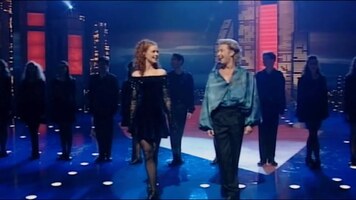 Click the image to watch the original, 1994 performance! Click the image to watch the original, 1994 performance! Riverdance Now that we’ve reached modern times in our origins series, it’s impossible not to mention Riverdance. If you were around in the 90s or early 2000s, chances are it’s how you heard about Irish dance in the first place. Riverdance was a global phenomenon that’s still considered one of the most successful dance performances of all time, grossing, by its 20-year reunion, over a billion dollars worldwide. And while the most traditional aspects of Irish dance live on, it would be impossible to deny the new life and interest that Riverdance helped breathe into the time-honored artistic sport that is Irish dance. It all began in 1981, when composer Bill Whelan was asked to write and produce an interval act for the Eurovision Song contest (which is now something like a pan-European X-Factor, but all music-based, and at the time was considered a very serious music competition.) This first piece was called “Timedance,” and featured Irish folk group Planxty playing baroque-inspired music with ballet dancers accompanying. When Bill Whelan was approached again (with 7 wins, Ireland has won the Eurovision contest more than any other country) in 1994, he decided to do something closer to Ireland’s roots. He created the most successful interval show in Eurovision history, “Riverdance”—a score filled with traditional Irish instruments like drum and fiddle, paired with “haunting vocals” and, of course, Irish dancers, all with a modern twist!  Click the image to watch the 1996 touring company in NYC perform “Reel Around the Sun” Click the image to watch the 1996 touring company in NYC perform “Reel Around the Sun” People around the world (the performance was initially seen by 300 million people worldwide) were stunned and amazed by this seven-minute introduction to traditional Irish dance and music, which up to this point was only well known in Ireland and areas with high populations of Irish immigrants. The audio recording stayed at the top of the Irish singles chart for 18 consecutive weeks (it’s still the second best-selling single in Irish history, only following Elton John’s “Candle in the Wind”) and a repeat presentation was held at the Royal Variety Performance (a yearly charity event held by the British royal family) that year. Husband-wife production team Moya Doherty and John McColgan saw the opportunity for this short performance to become a full-length theatrical event, and within six months Riverdance, the show, had its first performance in Dublin. Gathering together the music stylings of Bill Whelan and choral group Anúna with choreography largely by American-born Irish dance champions Michael Flatley (yes, the “Lord of the Dance”) and Jean Butler, Riverdance was not only an immediate, but a consistent hit. The opening night didn’t just sell out, but the first five weeks at the Point Theatre in Dublin, as well as a four-week run at London’s Apollo (and a second run, which was extended twice--over 120,000 tickets initially), as well as every date at New York’s Radio City Music Hall. The original production of the show would run for 11 years, but additional tours stretched the longevity to 23 at 515 venues in 47 countries on six continents! But Riverdance wasn’t just your grandmother’s Irish dance—it combined new, sleeker costuming (no elaborate, heavy dresses with Celtic designs or high-bouncing curls) with influences from other dance traditions, expanding the insular world of Irish dance for the world stage. While it made use of Irish dance’s iconic forms and steps, it also used choreographed arm movements and emotional ebullience to complete the performance, instead of the traditional stiff upper body and relatively controlled expressions. Drawing from other cultural dance traditions, such as flamenco and tap, Riverdance placed Irish dance as part of world dance tradition rather than completely apart (and engaged the audience in new, theatrical ways not entirely reliant on technique, as is all-important in the world of competitive Irish dance, as well!) The producers likened Riverdance as a mirror to the cultural revolutions happening in Ireland and throughout the world. Ireland of the 1990s was embroiled in the Troubles and Riverdance became a symbolic representation of the way Irish society was changing.
Little known to the casual Riverdance-enthusiast, Flatley actually wasn’t in the show for long. While he and Jean Butler were the stars of and choreographed the original, Eurovision performance, Flatley left the theatrical show only a few months after it originally premiered. There appears to not be one reason he left, but many—Flatley’s desire for complete creative control, his refusal to sign a contract over profit-sharing, salary, and royalty disputes, or, according to Jean Butler: his own ego. (Click that link for Butler’s more detailed description of working with Flatley—it’s an interesting read!) Flatley’s lawsuit against the production wasn’t settled until 1999, but it didn’t stop Flatley from garnering international acclaim from his own spin-off shows, Lord of the Dance and Feet of Flames among them. Flatley even holds the title of “Highest Paid Dancer” in history in the Guinness Book of World Records. While Riverdance might not be exactly the traditional Irish dance we teach at SRL, its influence lives on and had the positive affect of making Irish dance a household name worldwide. The show opened this once narrow cultural practice to those outside of Ireland, revived interest within its home country, and no one can deny—it’s quite a show! If you’re ever able to catch a performance don’t hesitate--the 25th anniversary show is even touring now! This post is part of a series. Read our last origins of Irish dance post, all about sean-nós, here. Check out the blog every Monday and Thursday for more posts about Irish history, dance culture, community news, and spotlights on our dancers, staff, and families—among other fun projects! And don’t forget to dance along with us on both Facebook and Instagram. 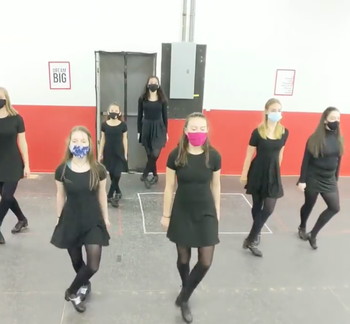 Click the image to see some stellar timing from some of our SRL dancers! Click the image to see some stellar timing from some of our SRL dancers! Last time we did a technique review, we covered rhythm. So you may be asking yourself…isn’t timing the same thing? While the two are definitely related, not quite! While rhythm refers to a dancer’s synchronization with the music, timing refers to the pace at which a dancer performs individual movements. Or, to say it another way: rhythm is how the pattern of movements correlates to the music’s pattern, while timing is the relationship of one movement to another. You can think of it as pacing too…but it’s a brain-twister! The truth is, it’s hard to separate timing and rhythm, and issues with one will generally cause issues with the other. Going back to the “Happy Birthday” analogy from last time—someone with rhythm issues won’t be able to stay on beat with everyone singing, while someone with timing issues may extend one word too long and then maybe speed up singing another part of the song. In Irish dance, especially in the more advanced levels, individual movements have individual timings (think of a sliding movement in a hornpipe dance versus fast-flying feet in a slip jig) and while keeping to the beat (rhythm) is one struggle, timing those individual movements is another. Essentially, one move may be meant to take two beats of the music but the dancer does it in one or three. There’s two separate kinds of timing issues on a basic level: too fast or too slow. While too slow is probably easiest to see with the naked, non-dancer eye (as it skips over too many beats in between or during movements)—too fast is equally common and might manifest itself with a dancer finishing a phrase (i.e. a set of movements) and then needing to pause to begin the next phrase. Sometimes timing issues stem from nervousness or difficulties with a particular move or phrase, and sometimes it’s an inability to hear the music. Dealing with timing issues, like rhythm, needs to be looked at on an individual basis, but there are a few things you can help with at home! First off, if it’s an individual movement issue, YouTube is your best friend! Look for a video of the move done correctly, then slowed down and explained, and then put to music that your dancer will be able to watch over and over again outside of the classroom setting. Sites like Target Training Dance or Irish Dance Magazine’s YouTube are amazing resources—Irish dance may be a small world, but it’s a supportive one, and there’s a dearth of information out there! When trying to figure out how multiple movements fit together (like when you learn a new step), we always recommend that dancers record a video of it slowed down with no music as well as a video with the step danced to music. Back in the day, we used tape recorders of our teachers singing or lilting steps before cameras were built into every phone! 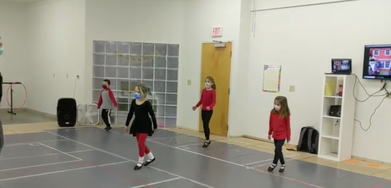 Timing is emphasized from day one, as solid timing is one of the easiest ways to move up competitive levels—click the image to see a Beginner class learning to time their movements! Timing is emphasized from day one, as solid timing is one of the easiest ways to move up competitive levels—click the image to see a Beginner class learning to time their movements! It may also be the type of music that’s the issue—perhaps it’s specific instruments (some dancers can hear a fiddle, but not the downbeat from an accordion, for example) that cause confusion or a music with a particular beat (to review the differences in Irish dance music, check out this past post!) This problem has the same suggestions for home practice as rhythm issues (see that post from last week here)—see if your dancer is able to clap along to the beat of the music. If they’re not able to hear the music they won’t be able to feel the music while they dance, which will throw off the timing of their moves. Musicality is a learned skill for many dancers and the biggest key for improvement? Consistent practice, determination, and possibly a private lesson or two for good measure (as small as SRL classes are, sometimes a little one-on-one time is needed to better suit one dancer’s particular learning style or better determine where the disconnect is.) At home, they can try dancing to the beat of a metronome or simplified beats (stripping back the music to simply beat will make is easier to hear!) You can also try singing steps alongside the music or using your hands to keep time to the music on the floor to help your dancer visualize the beat—every kid learns differently! The important part is to not give up, and ask your dancer’s instructors for help as needed! This post is part of a series. Read our last technique review, all about rhythm, here. Check out the blog every Monday and Thursday for more posts about Irish history, dance culture, community news, and spotlights on our dancers, staff, and families—among other fun projects! And don’t forget to dance along with us on both Facebook and Instagram. While “rhythm” is obviously a key part of any dance discipline (or casual dancing, for that matter!), Irish dance’s demands on a dancer’s rhythm are more complex than average. As dancers move up through the levels and start adding more types of dances to their repertoire, they’re also adding new types of music with a variety of rhythms they’ll need to be able to identify and dance in time to. While we’ve covered the different types of music used in Irish dance in a previous post (check out our post here! or a few other resources: here or here!), we’re here tonight to help explain the concept of rhythm in Irish dance and how to troubleshoot any rhythm issues! Rhythm, broadly defined, is the ordered recurrent alternation between sound and silence (in music) and (in dance) the movements that coordinate with that alternation. You may have run across Miss Courtney’s explanation of rhythm in class before—she likes to compare it to “Happy Birthday.” We all know how to sing “Happy Birthday,” and all do it unison every time. That’s because we inherently know the rhythm of the words, even without backing music. Rhythm in Irish dance is a little more complicated as there’s both movements and music involved, but the principal holds: when you understand and can hear the rhythm of the music your movements are in tandem with those beats. Or, as our dancers would probably say: iykyk. It’s easy to think of rhythm as a hard shoe-specific issue, and it’s true that it’s more noticeable to the casual observer when a hard shoe strikes at the wrong moment than your ghillies. But it’s not true of the adjudicators or your teachers—they’ll notice, for sure! Rhythm is equally important in soft shoe as it is in hard shoe. Dancers with rhythm issues will still be able to perform their dances in full, and will possibly still end in the right moment, making them think their rhythm is intact. However, rhythm has more to do with the individual style and timing of each movement in conjunction with the music—i.e. a heel strike on a down beat versus in the middle of a musical phrase. 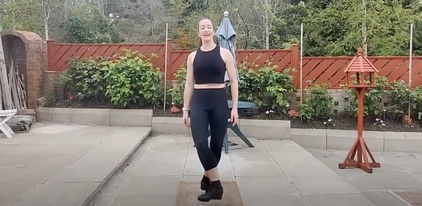 Click the image for a video with 3 simple drills to help improve your rhythm! Click the image for a video with 3 simple drills to help improve your rhythm! If a dancer is struggling with rhythm, the first step is to determine if they can hear the rhythm of the music. An easy test of this is having them clap along with it—some people simply can’t naturally hear the rhythm of the music and can’t follow, say, the beat of a jig (fast fast slow or up up down.) This is a skill you'll see practiced in our earliest levels (Tiny Jig and Pre-Beginner especially) and while it may not look like dancing, it's a precursor to this very important aspect of Irish dance! If clapping isn’t working, trying having them count the beats out. That may not work either, and it can be difficult for some dancers to realize they can’t accurately hear the rhythm of the music. Musicality is often a learned skill, and can usually be improved with patience, diligence, and help! A private lesson (or a few) for dancers struggling with rhythm is always a good idea, particularly if they have a specific dance they’re struggling with. Private lessons for rhythm issues give instructors the time to break down the dance and even record it for further study for the dancer without taking away from class time. But there are exercises you can try at home as well (besides constant practice, which is always a good idea!) This suggestion comes from feis circuit musician and former Irish dancer, Sean O’Brien—his fix for improving your rhythm is to practice your dances alongside a metronome instead of the music, saying: “This is the simplest way to strip music back to its fundamental, unchanging beat. Sometimes people can be confused by the layers of instruments, and a metronome helps to distinguish the underlying tempo.” Rhythm is a difficult concept to explain in words, and there’s always an ongoing debate about whether or not it can actually be taught. Our verdict here at SRL? Miss Courtney herself struggled with rhythm early on in her dance career, but (clearly!) overcame it—so there’s probably no better place to work on it than here at SRL! This post is part of a series. Read our last technique review post, all about extension, here. Check out the blog every Monday and Thursday for more posts about Irish history, dance culture, community news, and spotlights on our dancers, staff, and families—among other fun projects! And don’t forget to dance along with us on both Facebook and Instagram. 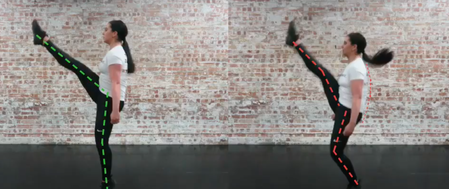 Welcome back to technique review, where we cover the most essential principles of Irish dance that every dancer needs to practice, train, and condition for—from Beginner to Championship level! This week, we’re taking a look at extension, a term which specifically refers to the line of the leg while dancing. It may sound simple, but it’s anything but! Proper extension for Irish dance is a little more complicated than standing up straight—it refers to the leg being fully straight and the knees pulled up at all times. The term “knees pulled up” can be a little confusing for non-Irish dancers, but signifies the muscles literally pulling up as you rise on your toes and extend your knee fully (it’s the correction Irish dance teachers love to yell when you bend your knees!) Once you reach the higher levels of Irish dance, this also refers to the dancer using the space on the stage to their full advantage, reaching as far as they can to “fill” each movement. While fully straightening your leg seems like something we all do every day, it actually requires a particular type of flexibility—most notably, the hamstrings. If you’re getting notes back from the adjudicators (or your teachers) noting that you’re “sitting on your knees,” it means your back leg is bent while dancing and you’re most likely dropping your heel. Tight hamstrings are the most likely culprit—it probably feels like you’re fully extending, even when you’re not! This isn’t a problem limited to Beginner dancers, as it’s something that can follow you into the upper levels if not addressed. While all our upper level classes begin with exercises meant to increase flexibility, hamstring flexibility doesn’t have an overnight fix. Like everything in Irish dance, it takes patience, dedication, and constant practice—i.e. daily stretching over a long period of time. Remember to NEVER stretch cold—always warm up first for 5-10 minutes—and make sure to hold each stretch for 40-60 seconds, focusing on each stretch as you complete the action. Need some new hamstring stretches? We love Target Training Dance for great tricks and tips specifically tailored to Irish dancers! 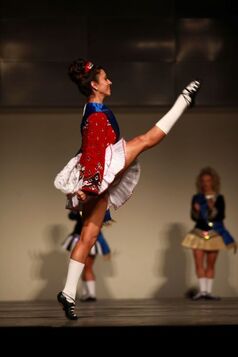 An example of full extension in a competition setting—this isn’t referring to the height of the kick, but the line of the legs An example of full extension in a competition setting—this isn’t referring to the height of the kick, but the line of the legs But hamstrings aren’t the only muscles that need to be addressed! A dancer’s glutes and quads are equally important, as these are the muscle groups you’re most actively engaging when you’re “pulling up” from your knees. The stronger your glutes and quads, the more focus you’ll be able to commit to this part of your form and the more natural a fully extended leg will become. But remember: leg strength and flexibility need to be balanced with core strength for this to work—Irish dance is a whole body workout. Click any of the links throughout this article to see a wide variety of exercises for everything from your hamstrings to your core! (That’s right, every single link here is another exercise (or set of exercises) to help with extension! And here’s one more for good measure.) But why is extension important? It’s not only that proper form requires a clean line from a dancer’s leg—there’s long term health and safety risks, as well. An estimated 80% of Irish dance injuries stem from overuse—which doesn’t mean your dancer is dancing too much, as much as it means they need further conditioning, a balance of strengthening and stretching in equal measure. It’s imperative for all Irish dancers to condition outside of their regular class time in order to avoid overuse injuries and be able to continue to improve. This article even found links between hamstring flexibility and the ability of a dancer to advance through the competitive levels. Whether you’re just starting out or have a room full of medals, remember: extension is key! (And so are the exercises to help improve it!) This post is part of a series. Read our last technique post, all about arching, here. Check out the blog every Monday and Thursday for more posts about Irish history, dance culture, community news, and spotlights on our dancers, staff, and families—among other fun projects! And don’t forget to dance along with us on both Facebook and Instagram. Sean-nós Dance In our Origins of Irish Dance series, we’ve covered everything from Irish dance’s druidic origins and 18th century dancing masters to competitive levels and modern costuming. However, there’s something we breezed right past, as it’s a deviation from the standard Irish step we teach at SRL: sean-nós dance! (Though we have dabbled in sean-nós before with dances like Maggie Pickens and a summer masterclass with guest instructor Annabelle Bugay!) Tonight, we’re taking a step back to take a look at this branch of Irish dance tradition that has had wide-reaching influence on not only Irish step dance, but other forms of dance as well. Sean-nós, meaning “old-style,” is a solo, percussive, usually improvised style of Irish dance strongly associated with Connemara on the west coast of Ireland. Unlike Irish step dance like we teach at SRL, which is highly regulated by the CLRG in Ireland, sean-nós is a more casual dance form that predates any modern records and developed differently in disperse areas over time. Sean-nós dancers, due to the improvisational nature of the dance that favors personal style over precision, normally dance alone, though many often take turns dancing to the music. Generally danced in a social setting, like a pub, party, or cultural festival (though competitions now exist, as well as some “standard” steps!), this form of Irish dance is more stripped down than step in both presentation and musical choices. While Irish step dancers perform highly choreographed routines in often elaborate costumes with stiff arms and high kicks, sean-nós Irish dancers throughout time have tended to favor their street clothes, improvised steps, free arm movement, and footwork that stays low to the ground. Additionally, while adjudicators expect a competitive step dancer to move over the entire stage during a performance, sean-nós was traditionally performed in tight spaces: a door taken off its hinges, on a tabletop, or even on the top of a barrel! There was even an old saying about how a good dancer could perform on a silver serving tray, but a great dancer could perform on a sixpence. (Though sean-nós dancers these days generally just prefer a hardwood floor.) Then, there’s the shoes. While any Irish dancer knows all about ghillies and hard shoes (check out a history of Irish step shoes here,) sean-nós dancers don’t have a particular type of shoe they’re tied to. However, they are looking for something that can make some noise! Sean-nós concentrates on what they call the “batter” i.e. hard, percussive sounds that emphasis the accented beats in the usually 8-count music being played as they dance. Many modern sean-nós dancers actually prefer tap shoes! While Irish step hard shoe and sean-nós have has much in common as they do differences by way of proximity, sean-nós also made a huge impact on the world of American dance forms. With the influx of Irish immigrants in the 1800s during the Great Famine, sean-nós made its way to the U.S. and subsequently became a part of our culture, whether we realized it or not! While sean-nós itself isn’t widely found in America modern day, it highly influenced the vaudeville era of American dance, lending its style to soft shoe, flat-footing, hoofing, and clogging—all precursors to American jazz and tap!
So, while SRL may not have a sean-nós class, this old-style of dance is still an intrinsic part of the story of Irish dance’s (and American dance’s) history. And it still lives on in many a pub and party today. (Can’t forget a pretty epic flash mob in Galway in 2013 to promote the 116th Oireachtas Festival there! Watch a video of it here.) This post is part of a series. Take a look at our last “Origins of Irish Dance” post, all about modern male costuming, here. Also: check out the blog every Monday and Thursday for more posts about Irish history, dance culture, community news, and spotlights on our dancers, staff, and families—among other fun projects! And don’t forget to dance along with us on both Facebook and Instagram. As Irish dance is an artistic sport that always striving toward the ultimate goal of flawless technique, we’re back with another aspect to concentrate on and work on at home. The term “arching” is a pretty descriptive one even for non-dancers—and from day one in dance class (across disciplines) every dancer in history has heard the same refrain, on endless repeat: “Point your toes!” But arching is so much more than simply pointing your toes! First off, a more apt description than “pointing your toes” would be “pointing your feet.” True arching is an extension of the line of your leg, meaning curling the toes is only the beginning. Your ankle must also become a part of this extension, with your ankle continuing the line in a movement not unlike when you’re pressing down on a car pedal. This clean line extends through the rounded top of the foot and through to the toes to make one seamless arch. Mastering extending both the ankle and the arch of the foot simultaneously can be a struggle for some dancers, usually choosing one over the other—watch out for that! An even more critical issues to watch out for in a dancer’s arch is sickled feet. Sickling your feet is the rolling of the ankle either in (pronating) or out (supinating.) This can be a part of a dancer’s natural anatomy. The easiest way to see if your natural tendency is to sickle your feet is to have someone look at your feet from the back while you stand straight—if the sickling is severe it’s best to consult a doctor as injury can result, whether or not you’re dancing! But, most sickled feet happen when a dancer “overpoints.” While a strong point is, of course, a need for any dancer, overpointing is the over-extension of the foot and toes, the force of which comes from the ankle and thus causes a dancer to pronate or supinate. Not only does this break the clean line of the arch you’re looking for, it can lead to weakness in the ankles and imbalanced muscular development. Another anatomy-based issue that can affect someone’s instep (another term for arch!) while dancing is being born flat-footed (though one can also develop flat feet!) This essentially means your feet, when you’re standing straight, are literally flat to the ground from every angle. Once again, flat feet don’t only cause a problem for dancers—they can lead to increased stress on your knees, back, and spine whether or not you know how to jig!
But how to improve? One thing to keep in mind is what you’re trying to strengthen. Make sure any additional research you do is tailored to the specific issue you’re combatting—pronation versus supination, etc.—or you can end up exacerbating the problem. But if it’s general arch and ankle strength you’re looking for, theraband exercises are still the go to. Don’t worry if you don’t have one! There’s plenty of exercises you can do with household objects—like Miss Courtney’s suggestions: laying a towel on the floor and using your toes to scrunch it together or putting Legos, marbles, etc. on the floor and using your toes to collect them! (Which also sounds pretty entertaining.) Or check out this list of easy household exercises that Feis America Magazine contributor Caitlin Buck has put together! This post is part of a series. Check out our last technique post, all about height on toes, here. Check out the blog every Monday and Thursday for more posts about Irish history, dance culture, community news, and spotlights on our dancers, staff, and families—among other fun projects! And don’t forget to dance along with us on both Facebook and Instagram. 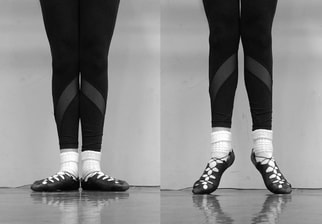 So far in technique review we’ve covered turnout, crossing, and posture—but we’re not done yet! We’re moving away from the arms and shoulders this week and returning to the feet as we discuss one of most important aesthetic and technical components of Irish dance: height on toes. As almost all movements are performed on the balls of the feet, maintaining height on your toes is necessary to properly execute all dances! While the term “height on toes” may conjure up the image of a ballet dancer in pointe shoes, what we’re referring to here is the ability of an Irish dancer raising themselves fully on the balls of their feet, not the tips of their toes. Though there is an exception to this rule (the “heel” or “stamp”) where the foot makes full contact with the floor, outside of this an Irish dancer must never let their arch or heel touch the floor! And yes, that even includes landing jumps! This can be particularly challenging for dancers while performing in hard shoe. Though the fiberglass heels of today’s hard shoes are much lighter than their predecessors, they can still often feel very heavy, especially to beginners, leading to dropped heels while dancing. This is an even more glaring issue when in hard shoe (as opposed to soft ghillies) as it’s not just improper technique, but leads to unnecessary additional sounds that can disturb your rhythm! As dancers move up through the levels, they’re not only expected to stay on their toes, but that their height on toes is so extended that they’re dancing well up on the balls of their feet, close to the base of their toe. Thus, performing strengthening exercises for your calves and feet outside of class is one of the keys to improving as an Irish dancer across the board. While there’s numerous theraband exercises that can help with conditioning your calves and feet, and single leg calf raises are a good workout as well, Miss Courtney recommends “doming” as the best possible way to help increase your arch strength and shaping. 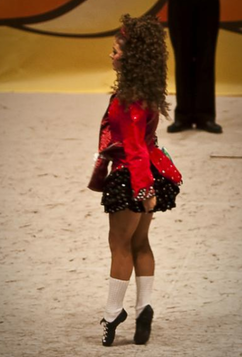 Doming is an exercise (see it in action here!) that not only works the larger muscles of your foot, but aims to involve the smaller, intrinsic muscles that are buried deep within the bottom of your foot. Strengthening these smaller muscles helps stabilize the joints of the foot as a whole, providing a more stable base for dancers to jump, jig, and move. You know how core strength is what keeps us upright? Think of this as core strength for your foot! (Check out some more tips from Irish Dancing & Culture magazine here and from Target Training Dance—a great resource--here.) It’s incredibly important for Irish dancers to make sure their feet and calves are at full strength, and not just because a lowered heel could knock you down a place during judging. A study in The Journal of Athletic Training in 2017 reports that fatigue in Irish dancers leads to heel drops and thus an increased risk of lower limb injury. Increasing the stamina of your height on your toes is imperative to help avoid the arch and heel release that can lead to injuries such as stress fractures, ankle sprains, and plantar fasciitis, among others. But, like anything else in life, preparation is the best way to avoid any problems, so get your dancer working on calf and foot strength sooner rather than later! This post is part of a series. Check out our last technique post, all about posture, here. Check out the blog every Monday and Thursday for more posts about Irish history, dance culture, community news, and spotlights on our dancers, staff, and families—among other fun projects! And don’t forget to dance along with us on both Facebook and Instagram. 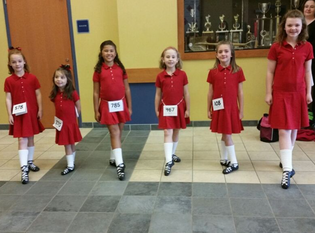 Something we love about Irish dance? How it sets obtainable and clear goals to work hard toward! This is an element that exists in every level of SRL’s classes—certain skills are a pre-requisite for moving onward and upward from Tiny Jig to Pre-Beginner, from Novice to Prizewinner, and beyond. It’s one of the reasons we think Irish dance is more than exercise and artistry—it’s a place to gain life skills that will serve your dancer across the board as they learn and grow. It’s never too early to learn patience, process, and the importance of persistence and hard work. Check in on any level of class—from our Championship dancers to our Beginners just starting out—and you’ll notice something you might not see at another kind of dance studio: a mixture of ages across all levels. While most other dance disciplines organize students both by age and skill level, Irish dance tends to organize only by skill level, something we hold to here at SRL. For students starting out in the early levels, this can be a surprise: if you’re starting Irish dance at 11 and are in class with 6-year-olds, you might feel like you’re late to the party or in the wrong class. That couldn’t be further from the truth! We’re here to talk through the benefits of mixed-age classes, and why SRL thinks they’re a benefit to our dancers.  First off, Irish dance isn’t just about dancing—it’s a hard-won skill that builds upon itself. You have to learn your jump-2-3s before you can learn your reel! Much like other forms of exercise that require openness and mindfulness to the process (such as other forms of dance or yoga,) Irish dance encourages dancers to understand their movements (and the paired music) on a fundamental level before they move on to more difficult moves and more complex choreography. When you watch an Irish dancer perform, what you’re really watching is many more basic, singular movements learned over many years that the dancer is in full control of. It’s why they look so light and graceful—practice, practice, practice! This way of determining skill level also functions as a safety measure. With Irish dance’s high-flying moves, proper technique is required to avoid injury. You can’t skip any steps! Secondly, Irish dance holds all dancers to the same standard no matter their age, race, gender, or experience. The strict regulation of Irish dance by the CLRG has led to the establishments of clear benchmarks that any dancer needs to clear before moving on. That means we can have 17-year-old students in class with 10-year-old students, because while these students may differ greatly in many ways, they all have the same foundational skills that makes them equals in the eyes of Irish dance. While the world isn’t always so fair, it does teach an important lesson to our dancers about the benefits of working hard to improve—you only get as much out of Irish dance as you put in and no one is rewarded by moving up a level simply for the fact they had a birthday! 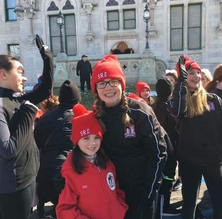 Lastly, and perhaps most importantly, here at SRL we love our mixed-age classes because of the peer-to-peer learning environment in encourages! Much like a Montessori school, we find that our mixed-age classes better stimulate all age groups’ development, improve social skills across the board, boost self-esteem, increase the taking on of leadership roles, and better simulate actual community environments. Beyond bonding with your classmates, we also encourage friendships and mentorships amongst age groups through buddy pairings for competitions and our student assistant program. This gives our younger students strong role models within the studio that they’ll then strive to emulate as they grow, but also gives our older students a chance to become those role models and try out teaching at a young age. We find this way of teaching mutually beneficial and motivating for dancers of any and all ages (with our instructors’ guidance, of course!) So, parents, don’t worry if your Beginner (or not-so-Beginner) dancer is initially unnerved by the older or younger students in their class—it’s all part of the process! While initial misgivings are understandable, especially as most dancers will have only interacted with peers of their same age, there’s benefits they might not be able to see at first glance. At SRL, we look at everything that happens inside our walls as a learning opportunity for our students…whether it be a new step or adjusting to a class they didn’t expect. As long as a dancer is putting their all in, there’s nowhere to go but up! This post is part of a series. Read our last 411 post, all about communicating with your teen, here. Check out the blog every Monday and Thursday for more posts about Irish history, dance culture, community news, and spotlights on our dancers, staff, and families—among other fun projects! And don’t forget to dance along with us on both Facebook and Instagram. Technique Review: Posture What does the word “posture” conjure for you? A young lady at finishing school balancing books on her head? Well, if you’re an Irish dancer you might have a different answer! When most people think about “posture” for Irish dance, the first thing that comes to mind is the unique form Irish dance utilizes: an unmoving, straight spine as their feet are flying. But good posture isn’t about just not moving your upper body—there’s a lot more to it than that! Good posture in other forms of dance is a little simpler than Irish dance (what isn’t,) with the term generally referring to an alignment of the spine and body—from the top of the head through the heels. Good posture isn’t just about correct technique--it’s about putting the least amount of stress on your ligaments, muscles, and body in general while performing an activity. There are benefits to maintaining good posture, whether or not you’re a dancer—less wear on bones and joints, decreased back pain and spine issues, and helps prevent muscle fatigue—but for dancers the stakes are even higher. Not only will the adjudicators notice incorrect posture (and dock you!) but maintaining a correct posture while dancing can also help prevent injury. With back pain as one of the most common complaints for dancers across disciplines, the best option for avoiding it is maintaining proper posture from the get-go to lessen the strain! But posture for Irish dance goes beyond standing up straight—it’s all in the arms! To get into the right posture for Irish dance, first stand with your spine straight, heart up (make sure to avoid arching your back and pushing out your ribs!), and push your shoulders back as far as you can—ideally until your shoulder blades touch at your spine! Try it at home, parents—it’s not comfortable, is it? It’s not any way to go about your day to day, but it’s the standard, required posture for solo Irish dance. And that’s not all! The arms need to be kept completely straight to the sides, hands always in fists. It’s a lot to remember while also remembering those steps! 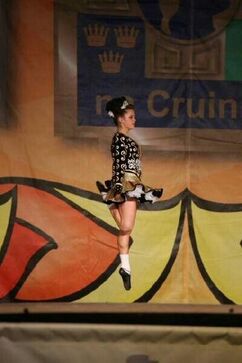 Issues with posture tend to stem from dancers not holding the correct amount of tension in their bodies. Too stiff and your movements will become jerky and awkward versus smooth and graceful. Too loose and the upper and lower body won’t appear to be in sync. Either of these issues encourage the biggest mistakes we see with Irish dancer posture: shoulders rolling forward (think what your dancer looks like hunched over their phone all day,) loose and untamed arms, bent arms, or arms pulling away from the body. But how can we encourage correct Irish dance posture? A technique we like to use in class (but can easily be utilized at home as well!) is pinning rubber circles (or paper plates) between the elbow and the ribcage. If the arm comes away from the body at all, the plate drops! This is a great way for your dancer to practice their feis performances—muscle memory is everything. The other key is core and upper body conditioning. A strong core and arms allow the position necessary for Irish dance to be held, even while the feet are constantly moving. There are so many exercises and tutorials available to help your Irish dancer with their posture! Miss Courtney suggests lateral pulses, shoulder rows, “dead bugs,” superman pulses and holds, and any core work at all! For our littlest dancers, egg rolls (and the paper plate trick) are the best starting point. Wherever your dancer starts from, these exercises and practices will not only improve their dancing, but help with their overall back health—whether they keep dancing or not! Tune in next time for a more advanced technique review, but a pivotal one as your dancer continues on their Irish dance journey: height on toes! This post is part of a series. Take a look at our last technique review, all about crossing, here. Also: check out the blog every Monday and Thursday for more posts about Irish history, dance culture, community news, and spotlights on our dancers, staff, and families—among other fun projects! And don’t forget to dance along with us on both Facebook and Instagram. 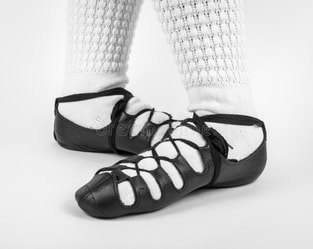 Last time, we took a look at the importance not only of turnout for the sake of technique and aesthetics, but for the safety of every dancer. This, of course, extends to other aspects of technique, including: crossing. Whether you’ve been dancing one year or twenty, crossing is one of the most basic techniques to master, as it’s the beginning and end position to any Irish dance move you might perform—one leg in front of the other. To determine what state your crossing technique is currently in, first turn out your feet (which we covered last week!) Then, starting with your heels still together, move your right leg in front of your leg without shifting the position of your turned-out foot, knee, or hip. The first goal is get your right heel touching your left toes. As you improve your turn out, the next goal would be getting your right toes to touch your left heel in the same position (with your right foot still in front.) This is the ultimate crossing goal in the Beginner and Early Intermediate levels, along with getting that first progression in every movement! As you move on to the highest grades of Irish dance, you’ll want to increase your crossing ability. To do this, you’ll want to keep moving your already crossed feet further apart—your left leg further to the right and your right leg further to the left—until you can’t move them any further. The goal for the best possible technique in Irish dance would be as much space between your shins as possible while you’re in a crossed position. However, it’s important to keep body alignment in mind when crossing, as the act of crossing can often lead to dancer to be facing diagonally instead of straight ahead. If this is happening, you want to correct yourself into a less turned out or less crossed position where you belly button is facing forward. A study of dancers across disciplines from the Clinics in Podiatric Medicine determined that 53% of dance-related injuries are of the ankle or foot (with a higher proportion in Irish dancers--83% in this specific study) citing lack of proper body alignment as one of the primary sources of said injuries. Crossing your feet may seem like no big deal, but as all jumps in Irish dance are expected to begin and end in this position, correct crossing technique is imperative to a dancer’s health and safety. Research from BYU in 2017 asserts that Irish dancers land with a force of 4.5-6 times their body weight, making proper technique while jumping one of the easiest ways to avoid injury. With the effects of dance shoes across disciplines being a relatively new area of study in sports medicine, mitigating this force with proper technique becomes paramount. There are many exercises to help improve your crossing technique, and some of Miss Courtney’s favorites include cross walks up to the mirror (to be able to see your alignment all the better—make sure to always practice with proper technique, it’s the only way to improve!), as well as floor butterflies to increase the strength in your inner thighs and glutes. Take a look at our last post in this series to see a few exercises that will help increase your turnout, too—turnout is important in every aspect of Irish dance, including crossing! The better your turnout, the better technique in your crossing. Miss Courtney also recommends mental cues while dancing to help you remember to both start and end in the correct position, such as “keep only one knee showing” or “keep space between your shins.” While the longer you dance, the more muscle-memory will kick in (read more about movement memory here!), it’s always good to have the mental cues tied to those muscle memories to reinforce this basic tenet of technique if you ever get flustered. It could save you from injury, and will wow the adjudicators! Tune in next week for another technique review—all about posture! This post is part of a series. Take a look at our last technique review, all about turnout, here. Also: check out the blog every Monday and Thursday for more posts about Irish history, dance culture, community news, and spotlights on our dancers, staff, and families—among other fun projects! And don’t forget to dance along with us on both Facebook and Instagram. 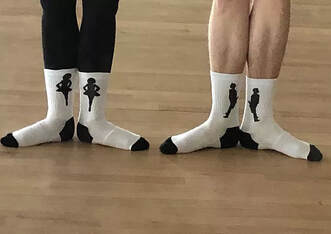 Click the image to see how turnout socks may help for home practice! Click the image to see how turnout socks may help for home practice! Welcome to technique review! In this new series of posts, we’re looking at some of the most important basics of Irish dance—from Beginner level to Championship. It doesn’t matter how many medals you may have won; every dancer needs to continuously refresh themselves on the fundamentals and continue to work on them! First on the docket: turnout. Turnout is one of the most critical tenets of dance generally, and Irish dance in particular as every movement of Irish dance is performed in a turned out position. Not only is correct turnout one of the key points noted by adjudicators on both a technical and aesthetic level, it’s also crucial for safety of the dancer. In a study published in Sports Medicine-Open in 2018, researchers concluded that improper or overcompensated turnout is one of the leading causes of injuries across dance disciplines. This expanded the conclusions published in Open Access J Sports Medicine in 2013 that decreasing the likelihood of dance-related injuries is possible with attention to proper technique and physical training. And as Irish dance’s gravity-defying jumps are performed with less cushion (both in shoes and technique) than other forms of dance, the need is all the greater to know what proper turnout is and to practice on improving it! Turnout in dance refers to an outward rotation of the leg, starting from the hip and continuing through the thigh, knee, ankle, and foot. The goal is a “perfect” 180 degree turnout—a straight line running from the left toe, through the left foot to the left heel, then through the right heel, foot, and toe. While some dancers win the genetic lotto and start with close to that 180 degree ideal, most dancers will have to continuously work on their turnout to achieve this! First: what’s your turnout like naturally? Stand with your feet together, heels touching, and then try to make a V-shape with your feet, turning the entire leg from the hip while keeping your heels together. You’ll know if you’re overcompensating your turnout through a number of signs, including: discomfort, knee position not matching foot position, and a slight (or not so slight) forward roll on the inside of your foot. Any of those signs and you’ll want to close your V-shape into a narrower position—as we said before, dancing when overcompensating puts dancers at a much greater risk of injury (and your teacher won’t be happy either!) But how does one improve their turnout? Like everything else in Irish dance: practice, practice, practice. The most important considerations are increasing the strength of your hip flexors and maximizing the range of motion in your hip joints. Exercises like clams, seated leg rotations, and parallel/turn out drills (among many others you’ll learn in class!) are the key to increasing that range of motion and strength. But none of this will help unless you also stay aware of your turnout while in motion while dancing. This focus can be difficult to maintain while you’re counting along to the music in your head and remembering your choreography, so Miss Courtney recommends giving yourself mental cues! Learning to remind yourself “heels forward, “toes out,” “show the inside of your heel,” or something similar while you dance is as important as the turnout itself–otherwise all that work won’t show in your dancing! Sound like a lot of extra work on top of learning all that choreography? It is! But because of the safety issues (here’s another study looking specifically at injury in Irish dancers that correlates improper landing technique with injury,) not working on your turnout may slow down your progress as an Irish dancer. Not only is it a basic principle of any dance you perform, but Miss Courtney and your other teachers care about your safety first and foremost, and may choose not to teach you more advanced moves until your turnout improves. As, for example, landing jumps or leaps on a straight foot can lead to severe ankle sprains or even cause ligament damage that can take years to fully overcome, you can’t progress without good turnout! This post the first in a series. Check out the blog every Monday and Thursday for more posts about Irish history, dance culture, community news, and spotlights on our dancers, staff, and families—among other fun projects! And don’t forget to dance along with us on both Facebook and Instagram. 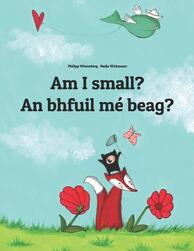 Volume IX Children’s Books, Part 2 With the summer winding down and regular dance classes about to start up again, it can be hard to get back into the school year groove. Back to school burnout is real and it happens to a lot of our dancers—so why not get them excited instead? We’ve gathered together five highly reviewed children’s books all about Ireland (and one about Irish dance!) that will get your dancer excited to be back in the studio (or at least more excited about it than school.) 1. Am I Small? Philipp Winterberg & Nadja Wichmann This story follows a young girl named Tamia as she takes a journey through a whimsically illustrated landscape, interacting with all sorts of magical and realistic creatures, and asking each of them: Am I small? But this book does more than tell a beautiful story (that comes to conclusion that size is relative and everyone is perfect just as they are)—it also has the distinction of being a part of the World’s Children Book project. Writer Philipp Winterberg has dedicated himself to not only writing books with positive messages, but has gotten over 400 translators in on the fun in an attempt to find universal touchstones for all the world’s children. Imagine a world where across every culture and border, we’ve all read Am I Small?! While the copy we’re linking is a bilingual copy in English and Gaeilge, the official language of Ireland, the book comes in over 200 languages, with a goal of 500 languages in the future. 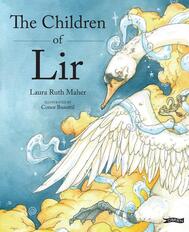 2. The Children of Lir: Ireland’s Favorite Legend Laura Ruth Maher & Connor Busuttil In this version of one of Ireland’s most beloved legends, Maher’s rhyming, lyric poetry is paired with Busuttil’s rich illustrations that call to mind the illuminated manuscripts of ancient Ireland. The story is one older than written record, stemming from a tale from Ireland’s millennia-old oral tradition, and tells of King Lir and his four children: Fionnula, Aodh, Fiachra, and Conn (this is also definitely an opportunity to learn some new names!) But, like many fairytales, all was not well in King Lir’s court after a mysterious woman arrives and becomes his wife. Like most fairytales, this new stepmother isn’t all she appears to be and transforms the children into swans, a form they remain in until the curse cam be lifted. This is a typical Irish legend, so not the happiest story, but don’t worry—it’s being told for little readers and skips the scarier parts! Want a preview before you buy? Check it out here. 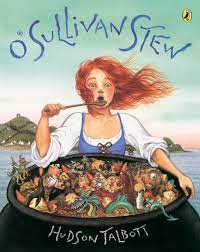 3. O’Sullivan Stew Hudson Talbot Meet Kate O’Sullivan: bold, brave, and always getting into trouble. When the witch in Kate’s village has her horse stolen, the whole town feels the effects: no fish in the nets, no food in the fields, and no milk from the cows. Kate takes matters into her own hands and enlists her brothers to help her steal back the horse and save the town from hunger—but there’s a problem: it was the King who took the witch’s horse! When the palace proves too challenging for a heist, Kate finds herself in front of the King with only her wits to save her and her family. Luckily, Kate is an excellent storyteller and the wild stew of stories she concocts just might do the trick! This rollicking adventure is full of creative, fantastical details, humor, and the most Irish thing of all (besides dance, of course): a good story or two! Sound interesting? Check out an elementary school principal out of Oregon reading it out loud for all! 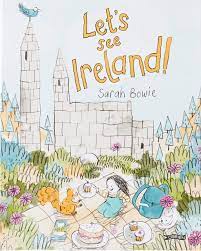 4. Let’s See Ireland! Sarah Bowie Come along with Molly and her cat, Mipsy, on their tour of Ireland! Bowie is a Dublin based author and illustrator with a comic art style perfect for children of any age—with some learning snuck in! Your child will meet the animals of the Dublin Zoo before stopping to feed the pigeons at Christ Church Cathedral, and then it’s on to peering over the Cliffs of Moher. Full of humor that doesn’t take away from the facts, from the Giant’s Causeway to Hook Lighthouse and Newgrange, Molly’s story will introduce all of Ireland’s most beloved sites—even the Titanic Belfast! While most kids will be able to recognize Big Ben or the Eiffel Tower from a young age, why not let them in on all the coolest sites in the country their favorite activity is from? (And it sure beats the price of a plane ticket!) Hear (and see!) the story, read by a staff member from the Kilmihil Library in Ireland in her beautiful accent, here. 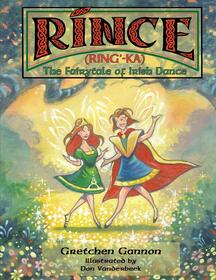 5. Rínce: The Fairytale of Irish Dance Gretchen Gannon & Don Vanderbeek Does the word rínce (ring-ka) look familiar? It should! It means dance in Gaeilge and is the R in SRL, after all! This fanciful story creates an original myth about the origins of Irish dance, that, while not necessarily factually accurate (check out our “Origins of Irish Dance” series on the blog for that!), is certainly fun! Gannon’s narrative brings us back to ancient Ireland, where faeries and humans lived together peacefully in a town called Rínce. This richly told and illustrated account (that anyone who loves fairytales will delight in) tells of Irish dance evolving from a pact between the Fae and the humans—creating a new legend for everyone to enjoy! Gannon might never have been an Irish dancer herself, but she married into the world—her mother-in-law hails from Limerick and founded the St. Louis Irish Arts School of Music & Dance—and this book is clearly a labor of love: her two young daughters have been Irish dancers since the age of four! This post is part of a series. Read our last set of book recommendations, for YA readers, here. Check out the blog every Monday and Thursday for more posts about Irish history, dance culture, community news, and spotlights on our dancers, staff, and families—among other fun projects! And don’t forget to dance along with us on both Facebook and Instagram. 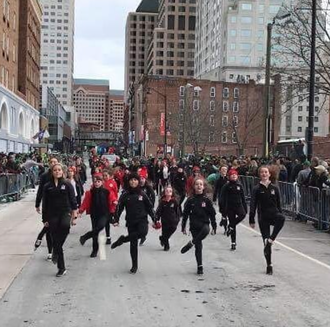 Part 2 Interested in trying out Irish dance, but aren’t entirely sure? We could talk all day long about the benefits Irish dance has, physically, mentally, and socially (and we have—check out these posts to learn more!) but why don’t we let some of our dancers tell you a little more about why they love Irish dance here at SRL! We hope you’ll join us! Looking for: far-reaching life skills? “Irish Dance trained me to have a very high stamina, physically and mentally. Courtney was the best at pushing her dancers towards their goals. I know how to work towards long term goal without being worn out, and to push through to the very end.”—Lindsey Looking for: competitive spirit? “My favorite thing about dance is the competition. I like that in Irish dance you can show off how much you've learned and progressed.”—Magnus 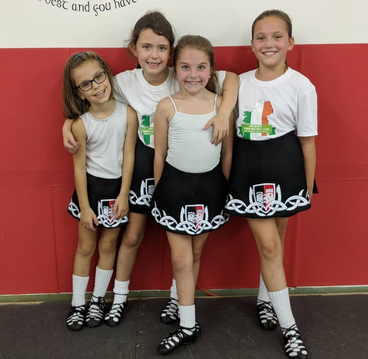 Looking for: enjoyment and self-expression? “When there are no words to explain how you feel, you express yourself through dance. I remember there would be nights when…I was tired, but when I walked through those studio doors I knew it was my time to work. And when I walked out of those doors at the end of the night, I felt like a better person.”—Lindsey Looking for: an online option? “My favorite thing about online class is I can dance at home safely and there’s more one on one with the teacher. Plus, my mom is there to help if I'm struggling.”—Avonlea Looking for: inspiration? “I look up to Courtney because she has given me a second home and something that I truly love.”—Ellie Looking for: friends? “Dance has given me the ability to have friends all around the world that share the same love and passion for Irish dance that I do.”—Christian 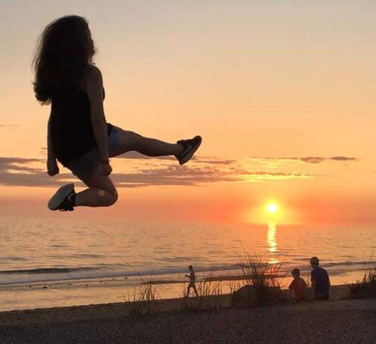 Looking for: somewhere to learn and grow? “Irish dance was a life changing experience that provided me with so many opportunities to learn and grow. It was a daily challenge, which inspires my work ethic today. I always aim high and dream big. Through Irish Dance, I learned by working hard and practicing my craft, I could achieve anything.”—Tara Looking for: something to be passionate about? Just take Tilly’s word for it: “I like Irish dance and you will too!” If your dancer is looking for it, SRL has it! While classes run on a school year schedule from September to June, we have a special offer to let new dancers get a taste before they sign up in the fall! SRL’s Intro to Irish Dance Summer Camp sign-ups are now open for new dancers 2-12, with two sessions available at work-friendly drop off times for parents. Learn more about the program here, or feel free to reach out to our Office Manager, Devon, at 860-385-1107 or shoot her an email at [email protected]. She’s happy to help! This post is part of a series. Take a look at our last 411 post—tons of testimonials from parents!— here. Also: check out the blog every Monday and Thursday for more posts about Irish history, dance culture, community news, and spotlights on our dancers, staff, and families—among other fun projects! And don’t forget to dance along with us on both Facebook and Instagram. 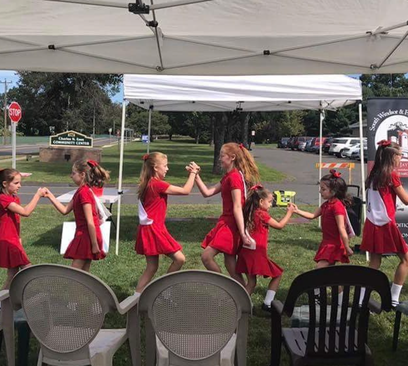 Part 2 Is your child interested in dance, but you’re not sure where to start? Why not Irish dance? We won’t try to convince you (check out these multiple posts in case you want some more convincing—we do have a strong case,) but thought we’d let our amazing community of parents tell you why SRL is the right choice, instead! Looking for: exercise with purpose? “Physically it’s helped with coordination and strength. But it’s also helped with focus and determination. And it’s given them a fun way to get their wiggles out and make new friends.”—Evelyn Looking for: cultural enrichment? “I’m Irish, I’m involved in the Irish community, and I thought this might be another way to engage my daughters in an activity that would be great for them and also tied to their ancestry.”—Siobhan Looking for: a confidence boost? “Dance has built [my dancer’s] confidence and has opened her up to experiencing new things.”—Christina 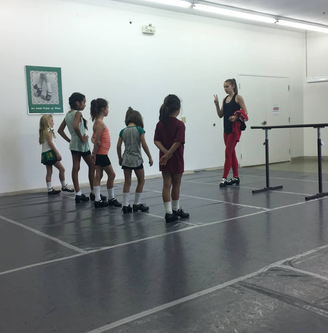 Looking for: dance that teaches life skills? “I think Irish dance has taught [my dancer] perseverance, grace under pressure, humility and the understanding that its ok to not be ok! Do your best work and enjoy the journey.”—Christine “I love the way the classes are structured to challenge the students just so much that also pushes them forward in their learning.”—Andrea Looking for: a way to encourage goal-setting? “[My dancer] is competitive and she wants to do well, but she’s a little girl who can be easily more interested in other things. Dancing with SRL and Miss Courtney has given her ways to practice at setting goals and working toward them. This was never more true than her second year when she was struggling with reading in first grade and simultaneously did poorly at a feis. Right after that, she set two goals—which she even wrote down—to get better at reading and to get better at Irish dance. By the end of that year, she had improved dramatically at both.”—Siobhan 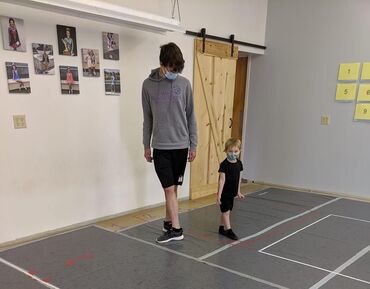 Looking for: a unique, year- round activity? “If your child loves to dance, they should try Irish dance. It’s different than any other style of dance…[My dancer] has been doing other types of dance for years, but Irish dance is beautiful and unique.”—Christina Looking for: an outlet for male dancers? “On an uncommon comparison, I often think it has similar qualities to karate with the discipline, athleticism, and focus. But, Irish dance has joy and musicality that takes it to another level; this is why I think it’s also very good for boys even though it may not be the first thing one thinks.”—Siobhan Looking for: community and support? “I’m amazed at the choreography [my dancer] memorizes. I was so proud that she quickly gained the confidence to participate in a public performance and also do her first feis. I enjoyed watching her teach a dance to some younger Girl Scouts at one of our meetings last year, and I love that she has volunteered to help out at SRL classes with younger children—it’s all been a great growing experience for her in many ways.”—Becca “I wanted [my dancer] to get involved in something, but she did not want to try the traditional tap, jazz, ballet route. I got her to try a class at SRL the summer she was 4 years old and she fell in love with the dancing, the older kids, and of course Miss Courtney.”—Andrea 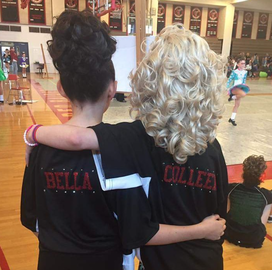 Looking for: options? “Irish dance is great because it is completely up to you and your dancer as to how involved you want to be. Competition and performances are optional or you can choose to compete every weekend if you want. It’s a unique skill to have and fun to get to show it off!”—Jill L. If you’re looking for it for your dancer, SRL has it! While classes run on a school year schedule from September to June, we have a special offer to let new dancers get a taste before they sign up in the fall! SRL’s Intro to Irish Dance Summer Camp sign-ups are now open for new dancers 2-12, with two sessions available at work-friendly drop off times for parents. Learn more about the program here, or feel free to reach out to our Office Manager, Devon, at 860-385-1107 or shoot her an email at [email protected]. She’s happy to help! This post is part of a series. Take a look at our last 411 post—tons of testimonials from dancers!— here. Also: check out the blog every Monday and Thursday for more posts about Irish history, dance culture, community news, and spotlights on our dancers, staff, and families—among other fun projects! And don’t forget to dance along with us on both Facebook and Instagram. |
SRL NewsFind all of our latest news on our Scoil Rince Luimni Facebook page! Categories
All
Archives
August 2022
|
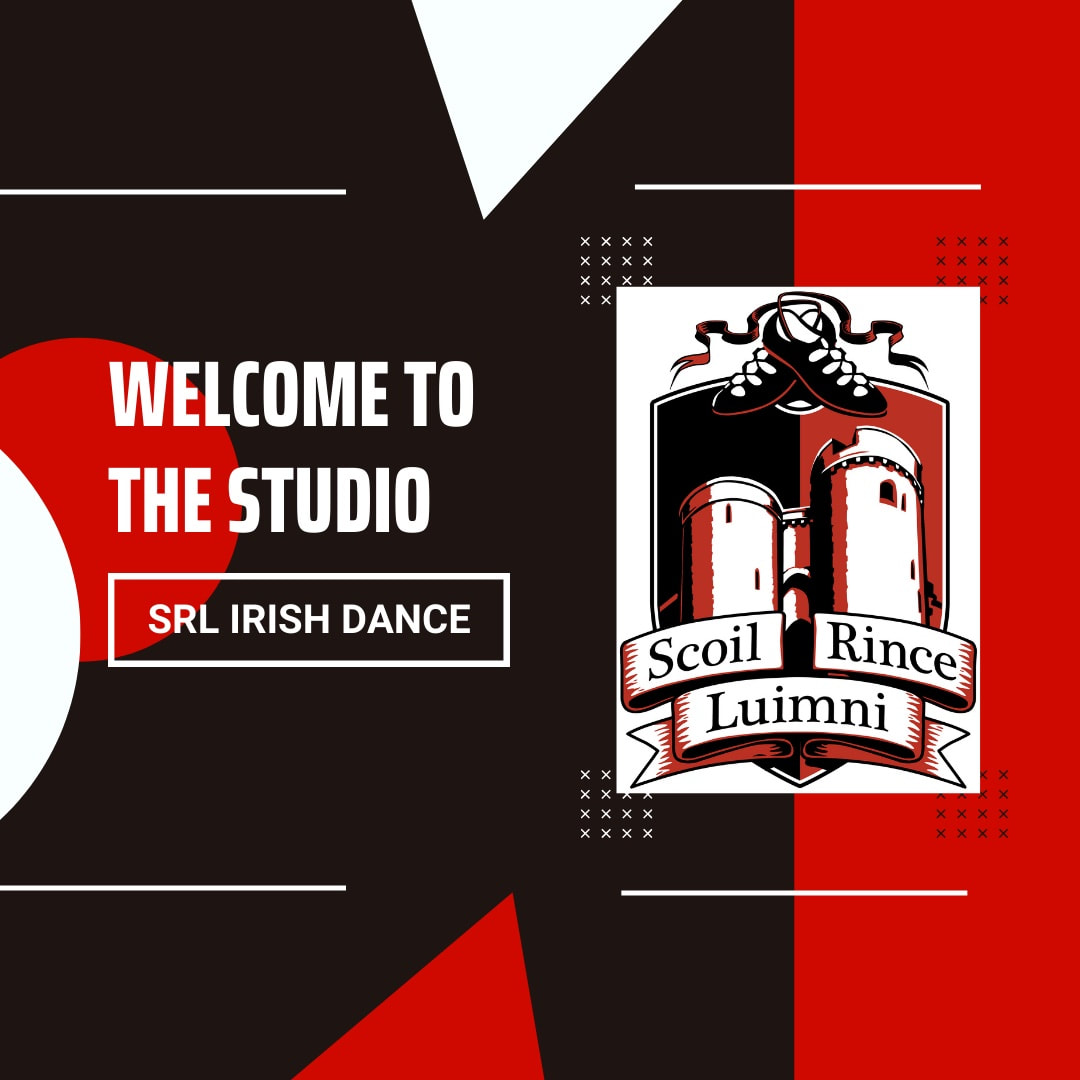
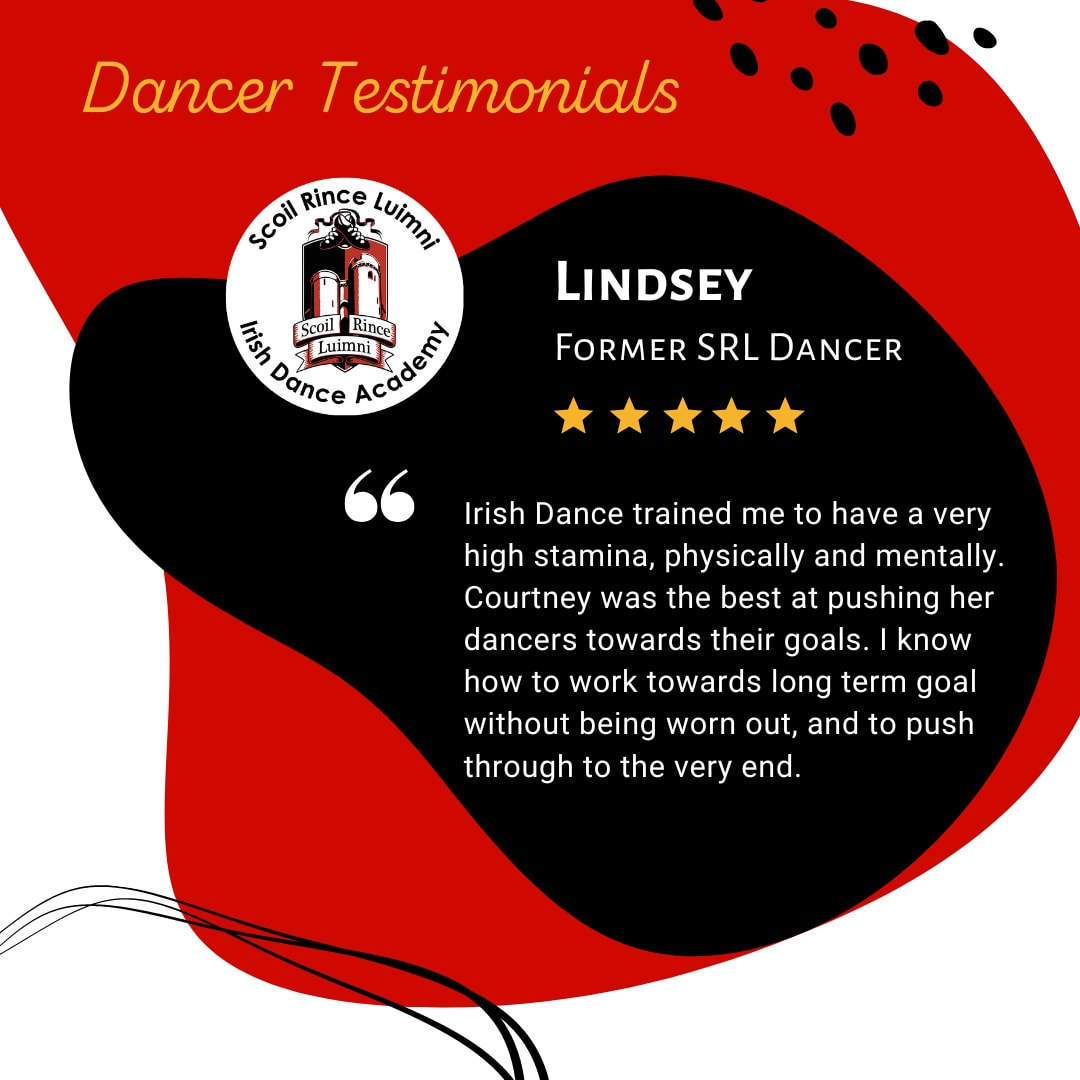
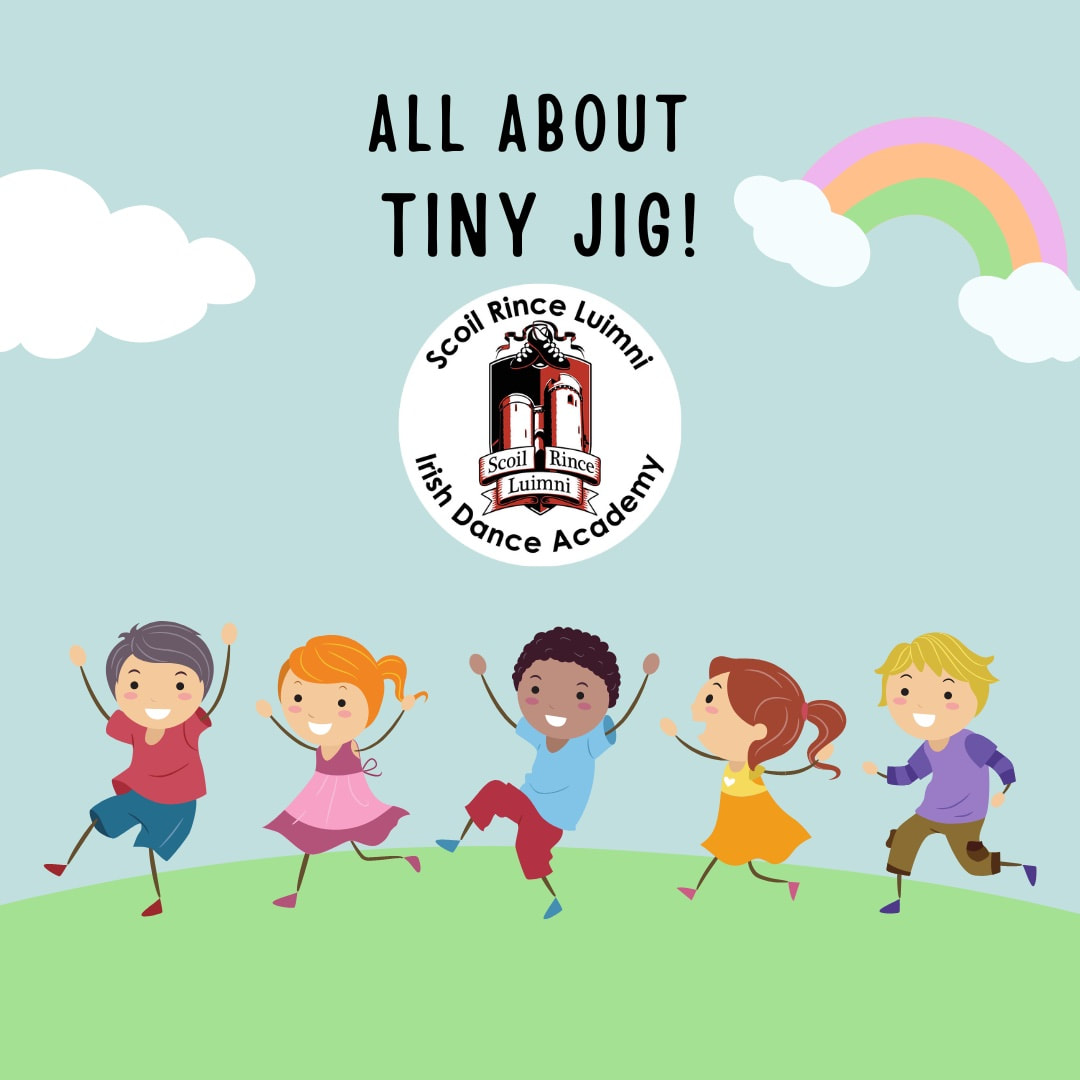
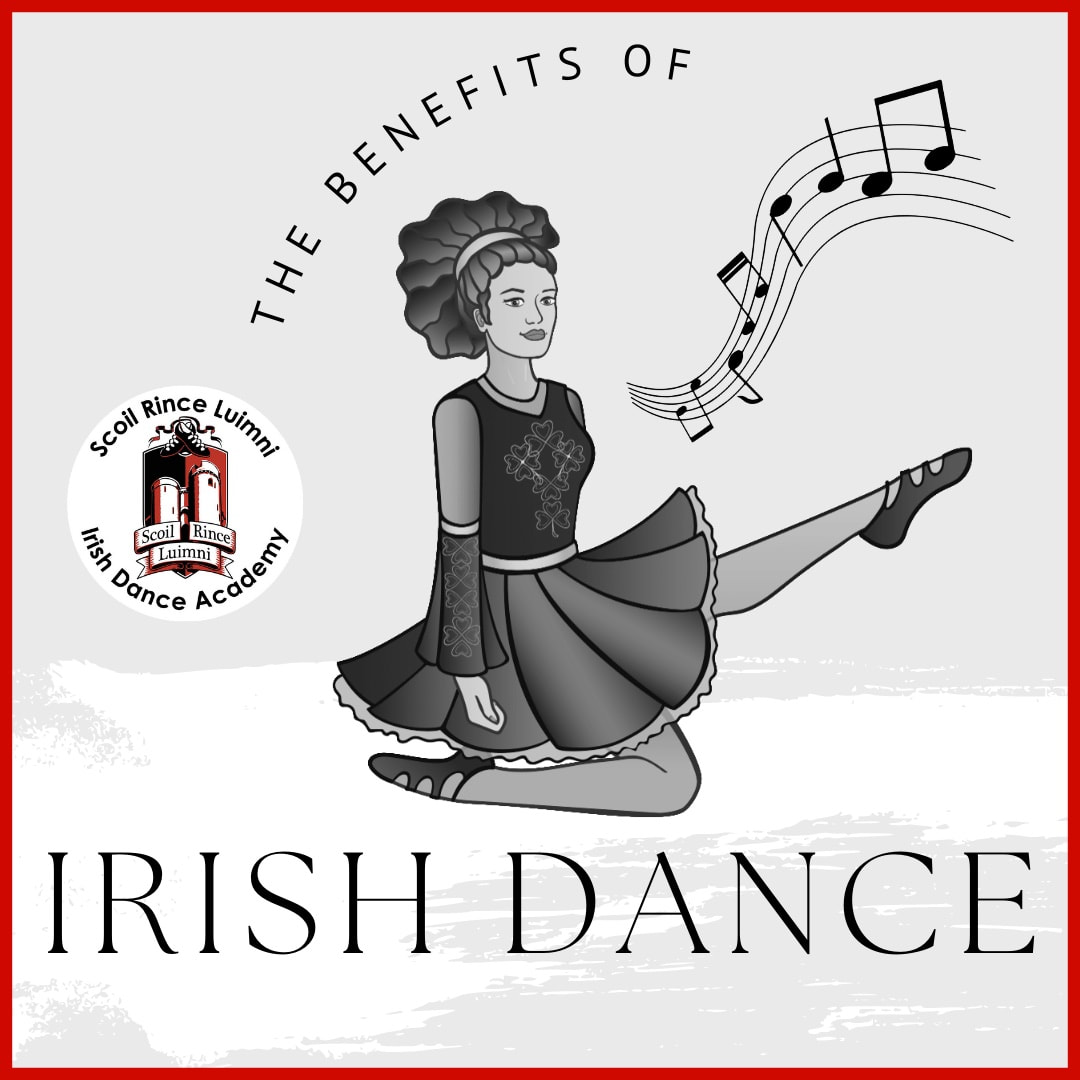
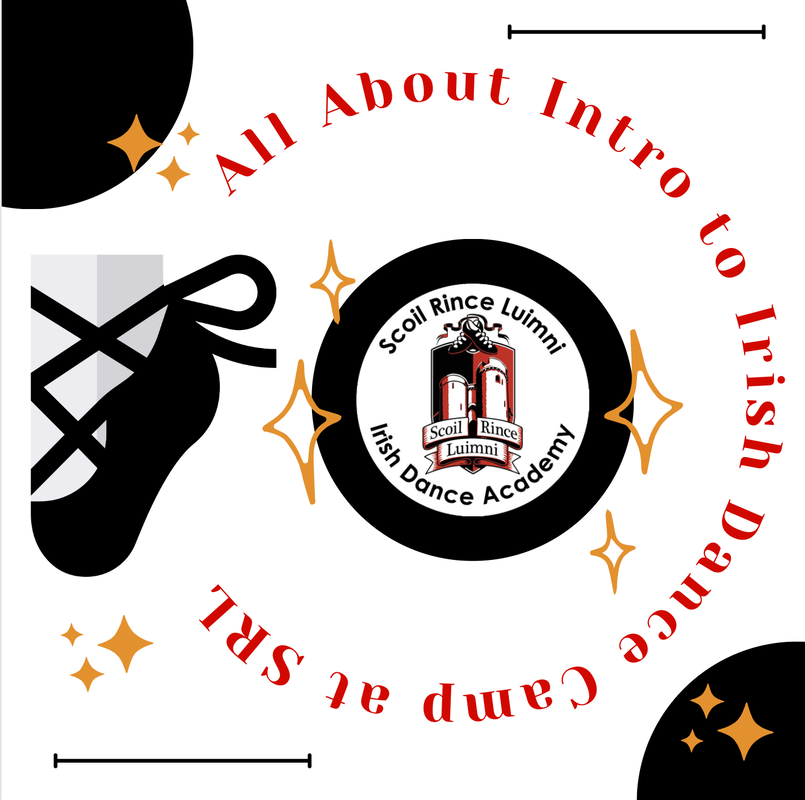
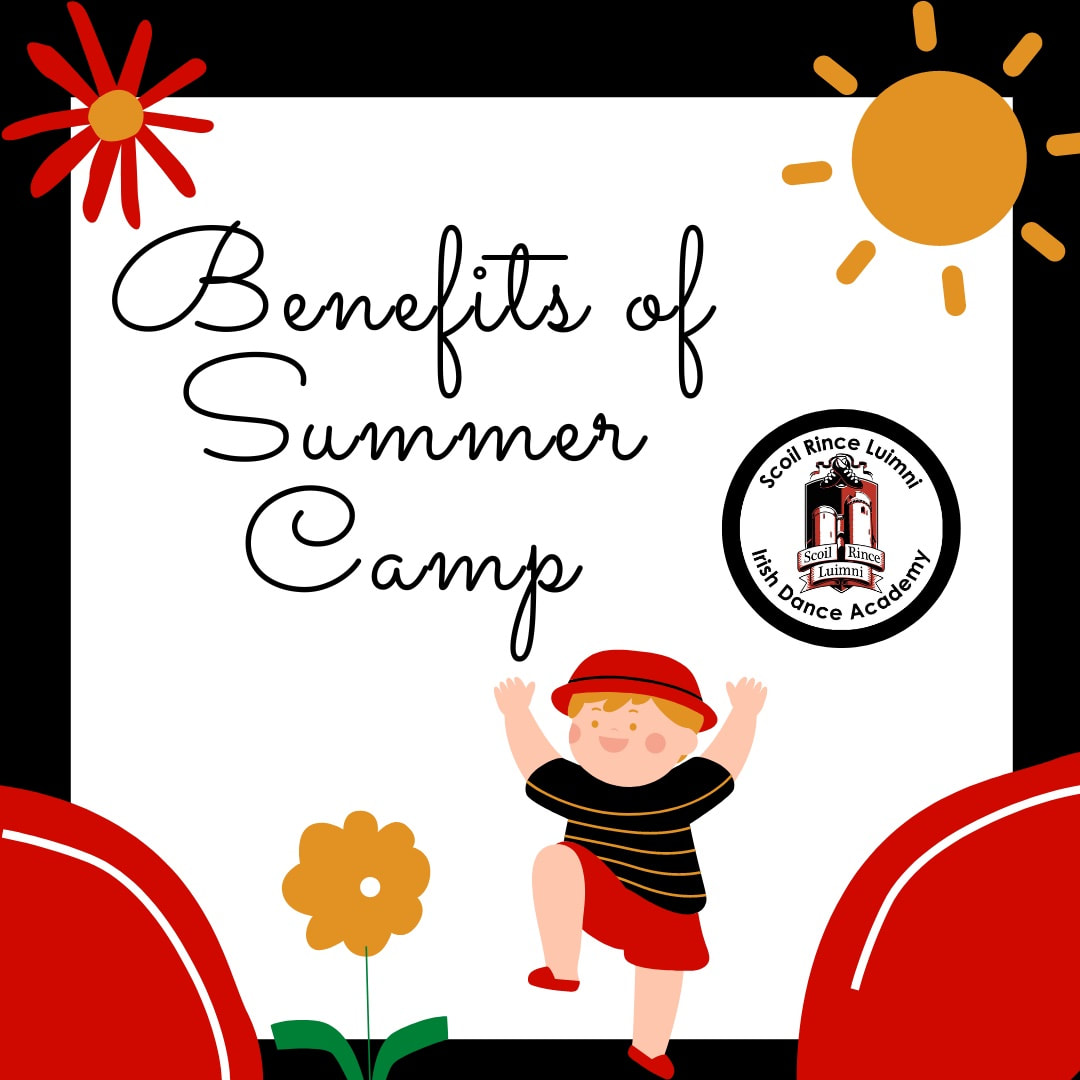

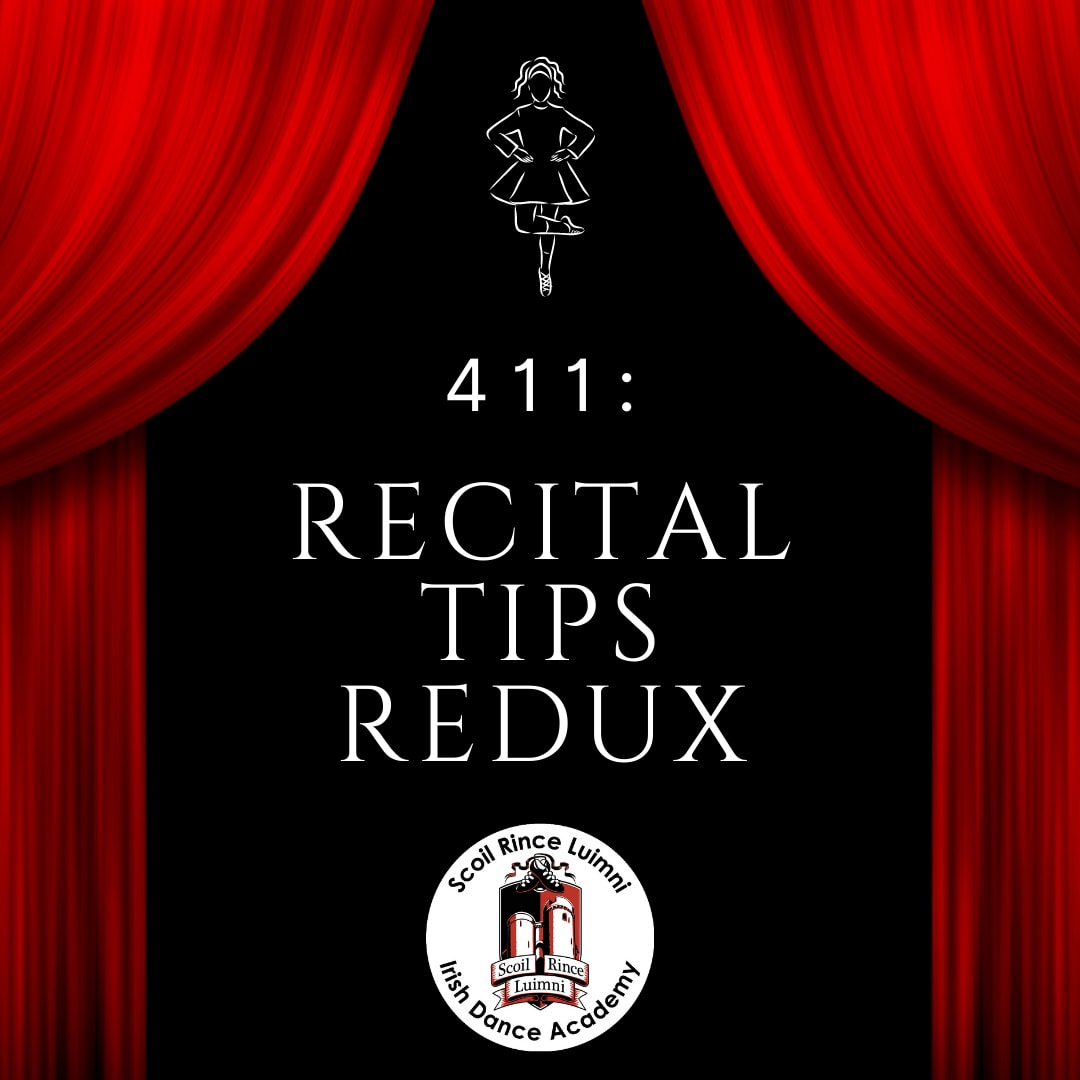
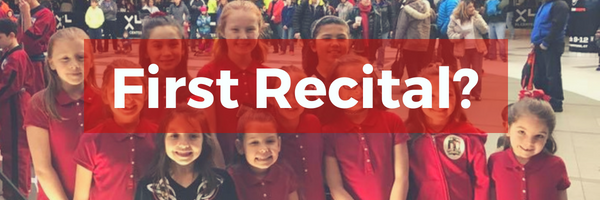
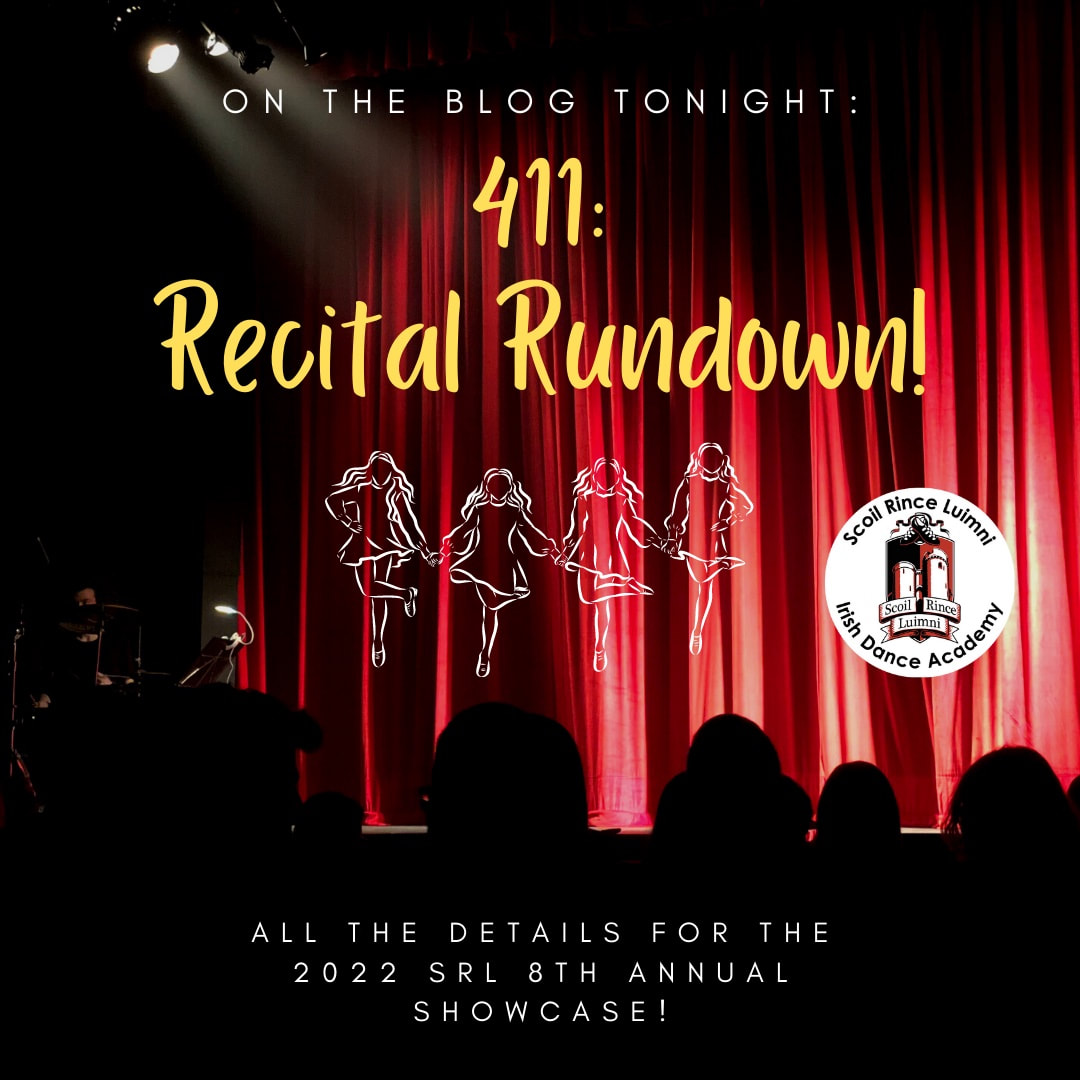
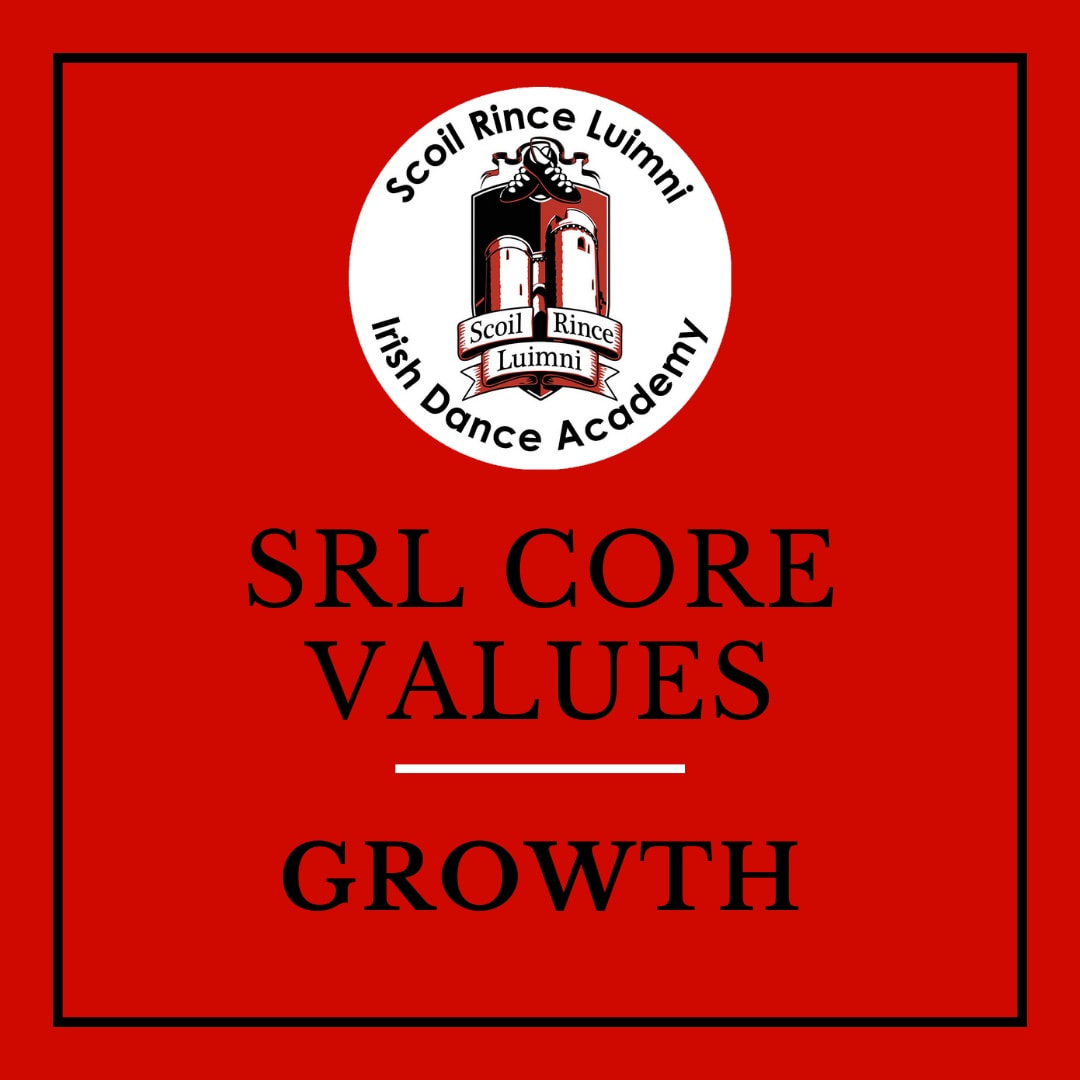

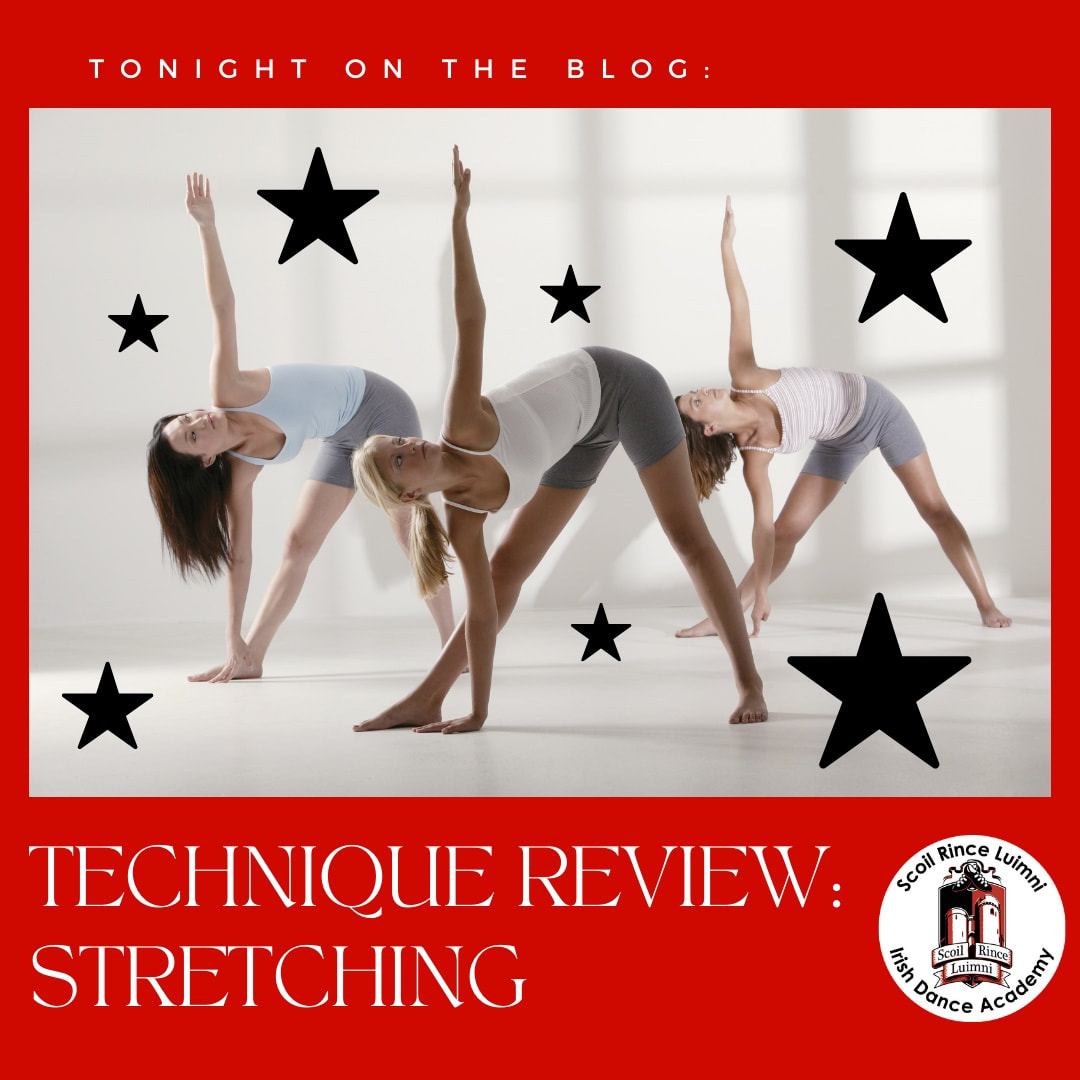
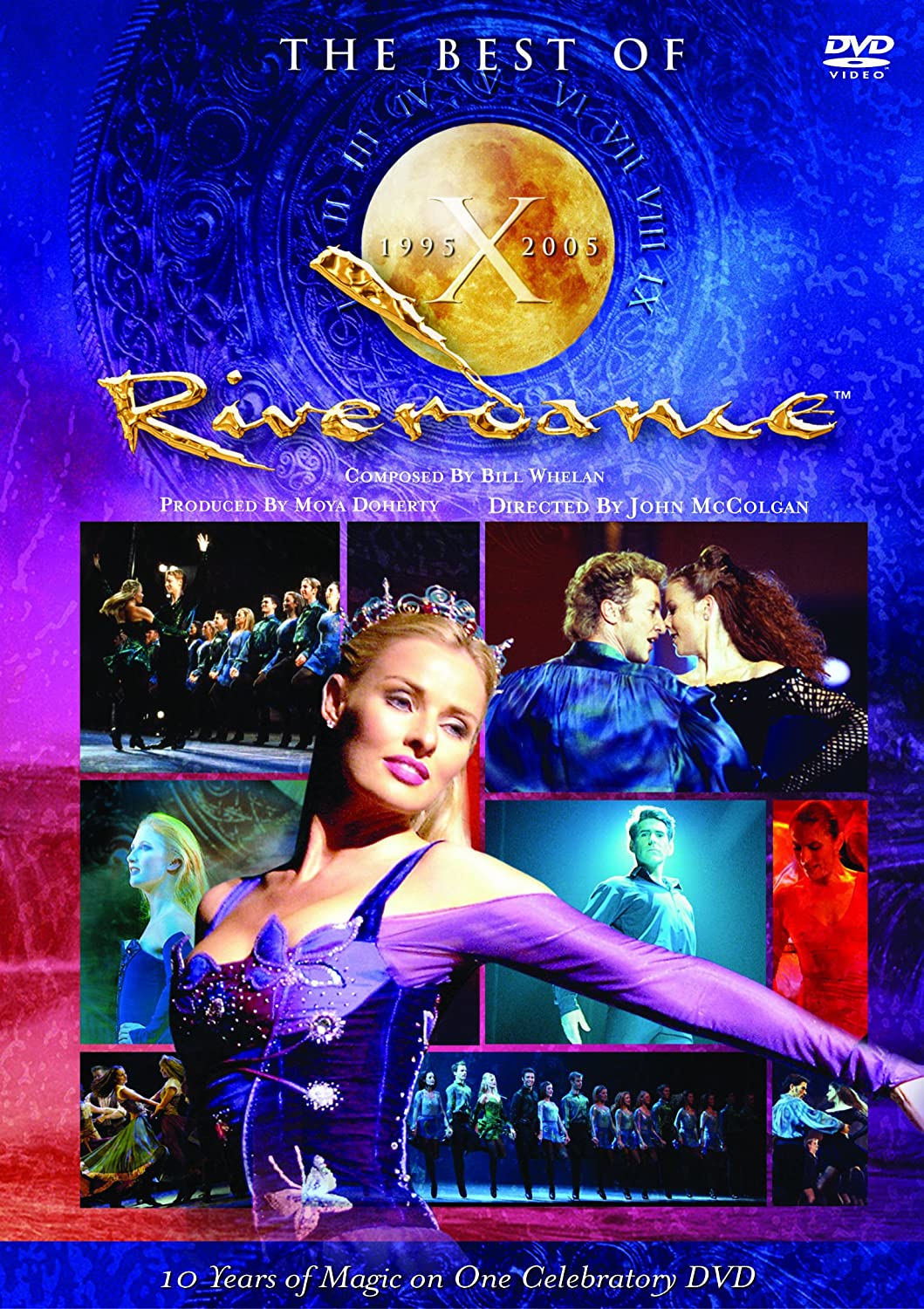
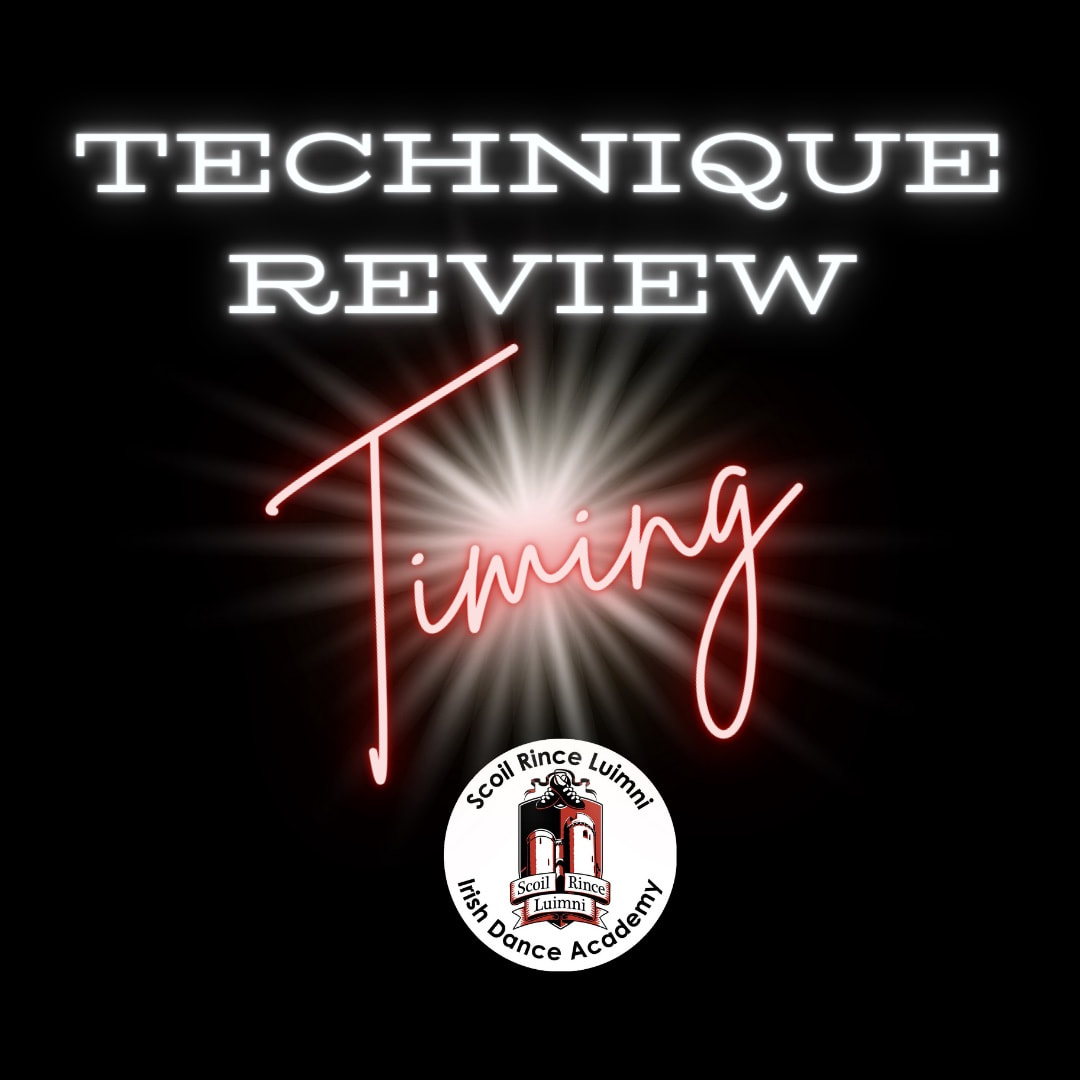

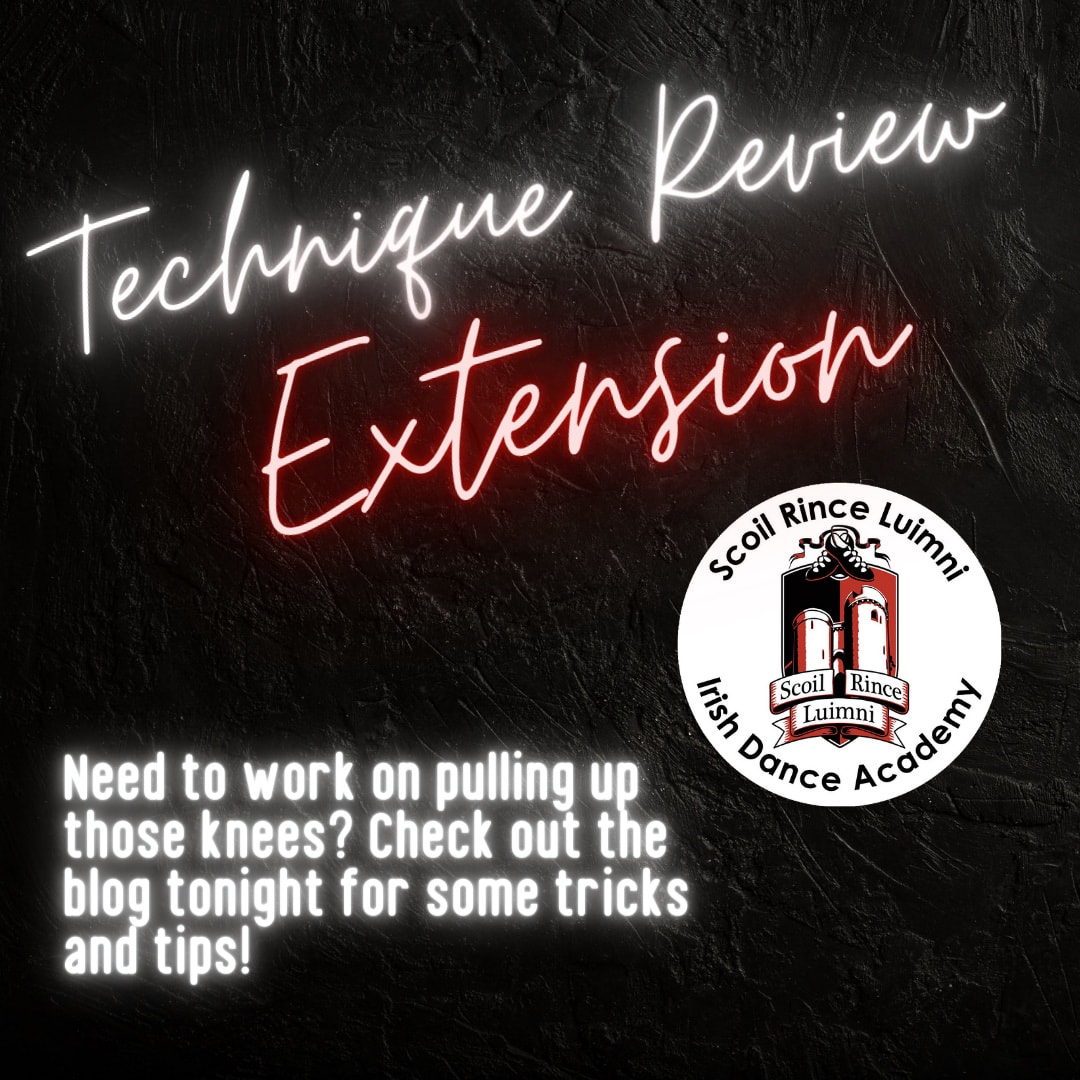

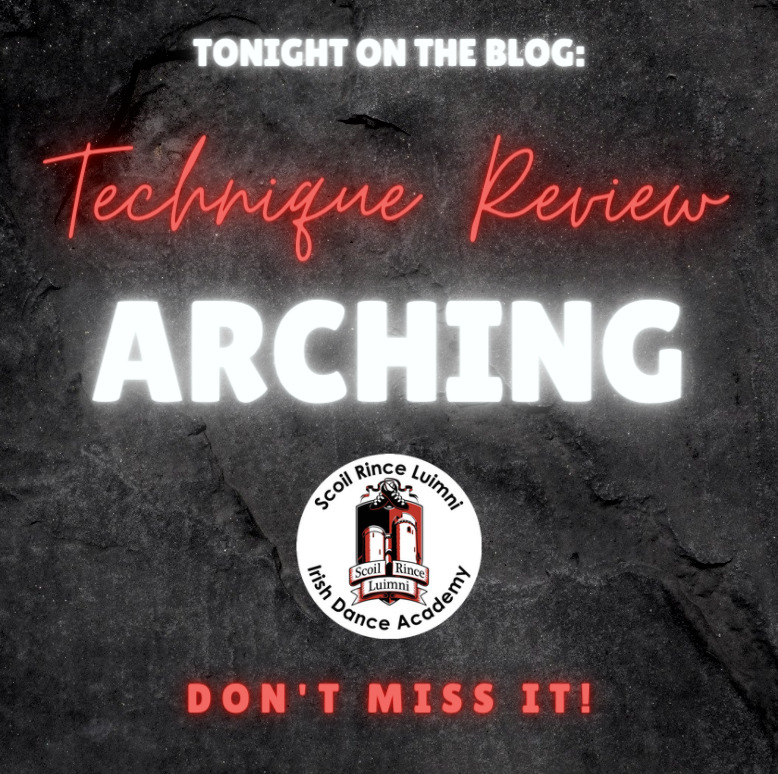

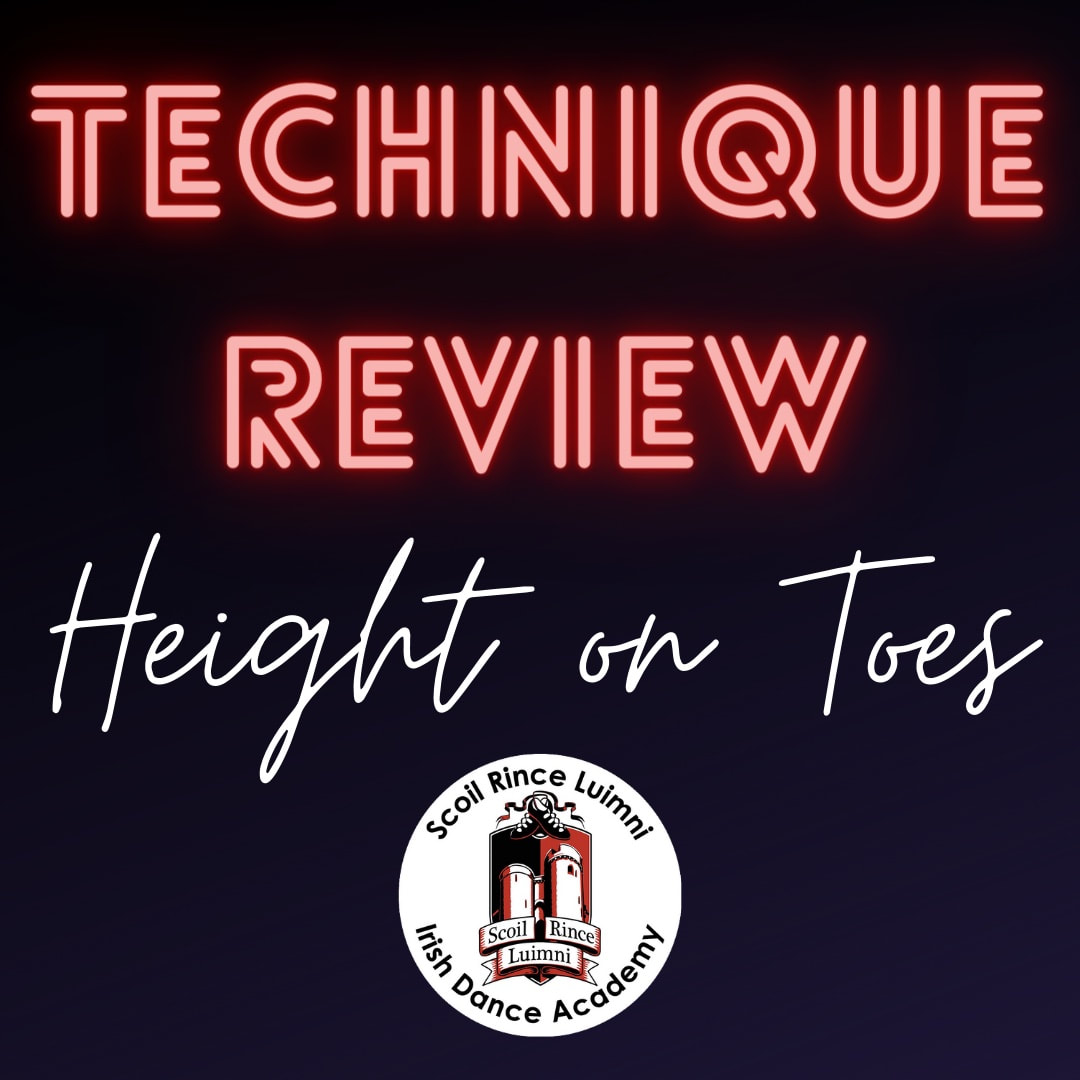
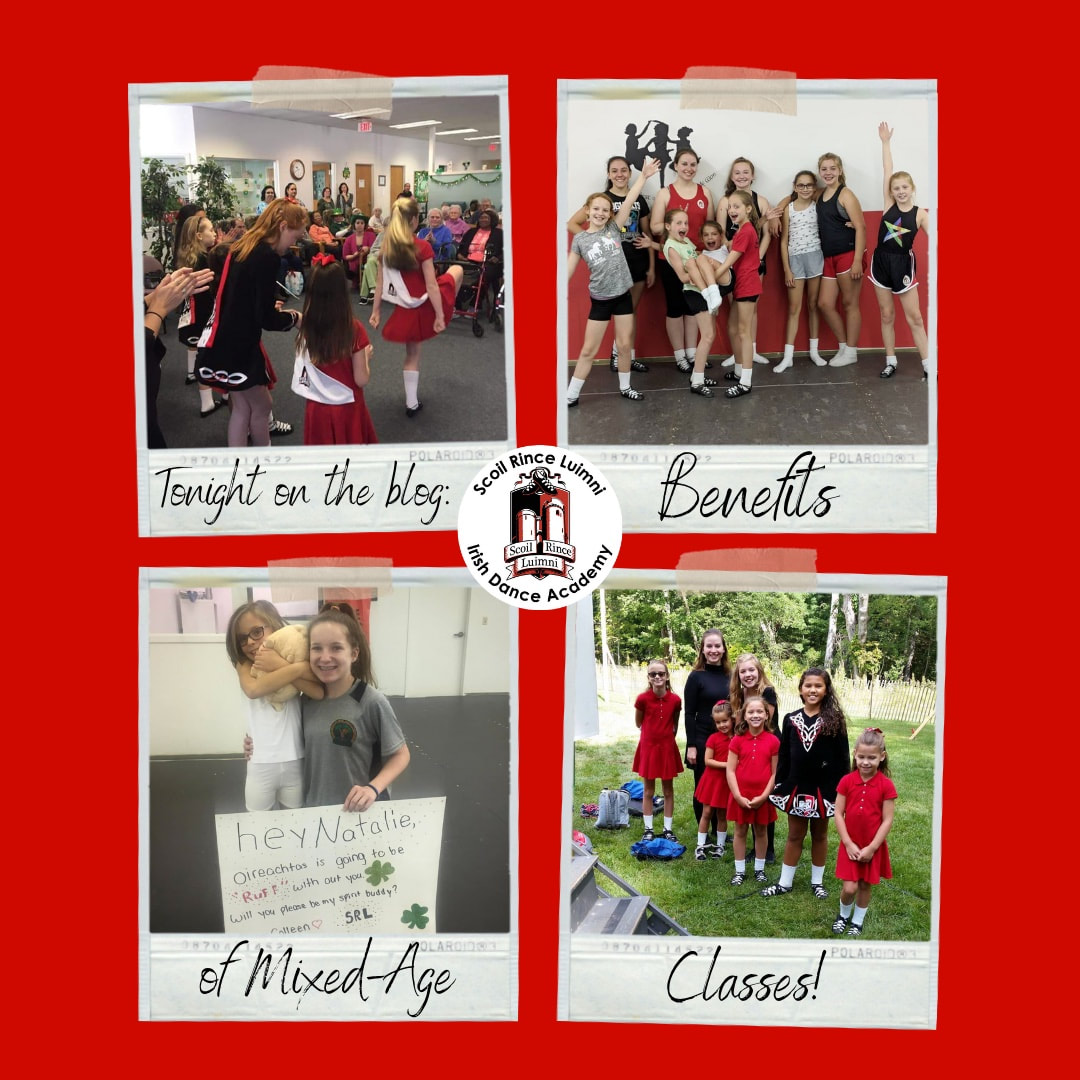
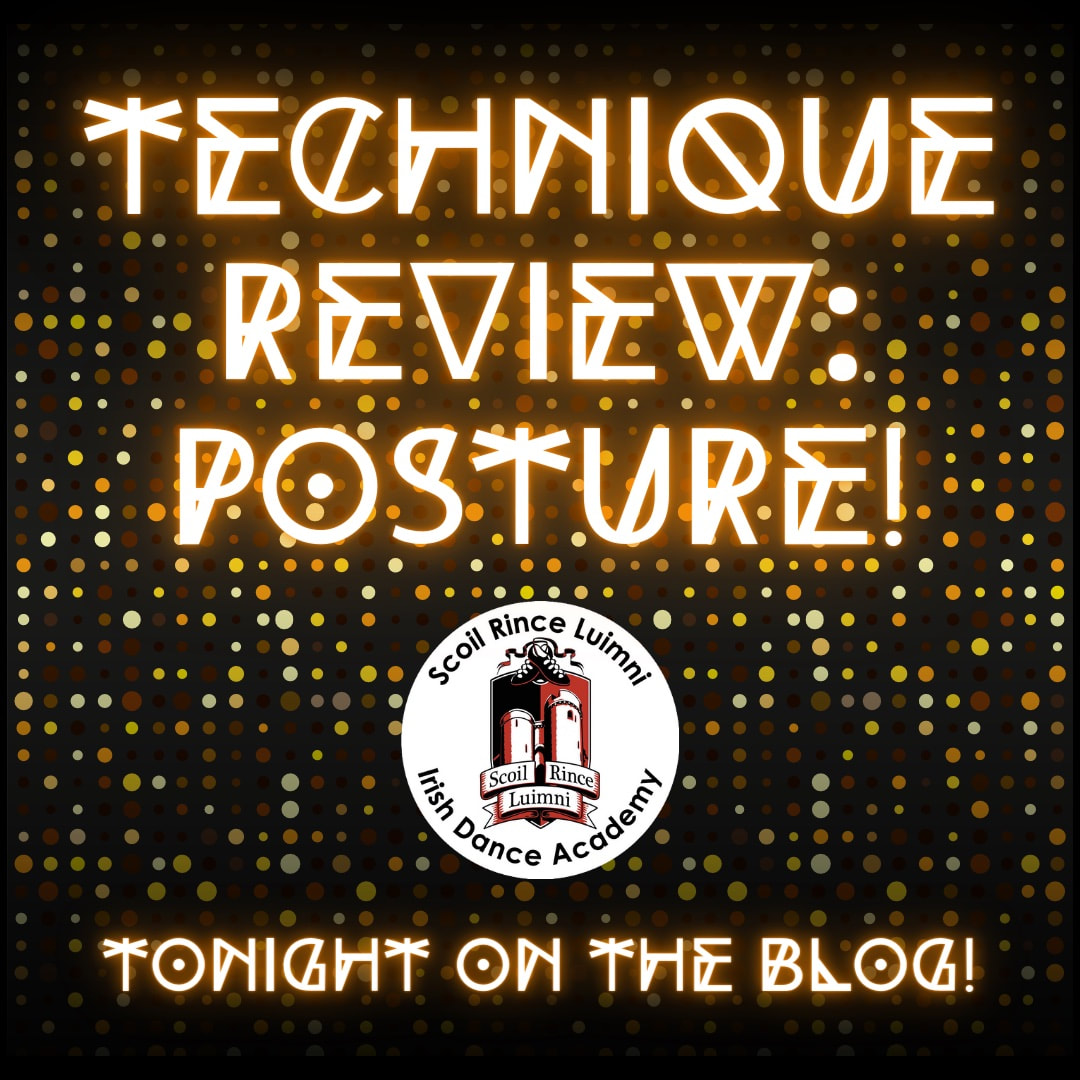
 RSS Feed
RSS Feed